
Login

Young Economist of the Year competition sponsored by KPMG
The 2024 Young Economist of the Year competition is held by Discover Economics , sponsored by KPMG and the Financial Times. To find out more and enter your submission, click here .
The Young Economics of the Year Competition is our annual student-based competition, to encourage students to think about current economic issues and promote the study of economic science.
The competition aims at encouraging Year 10 – Year 13 students (in England and Wales, or equivalent in Scotland and Northern Ireland) to produce their own ideas in analysing contemporary economic problems facing the UK and the world.
Stay tuned to find out more about the 2024 competition, and sign up to the Discover Economics newsletter here !
More information below.

Previous winners

Royal Economic Society announces Young Economist of the Year

Winners of the Young Economist of the Year competition 2022
Winners of the Young Economist of the Year 2021
Winners of the Young Economist of the Year 2020
Young economist news.

Discover Economics launches 2024 Young Economist of the Year Competition

Winner of Young Economist of the Year 2022 competition: cryptocurrency

Winner of Young Economist of the Year 2022 competition: value of education

Winner of Young Economist of the Year 2022 competition: cost of living crisis

Greater Lincolnshire: A Plan for Economic Development – overall winner of Young Economist of the Year 2022 competition
Foreign, Commonwealth and Development Office launches Next Generation Economics Competition
Related projects.

Annual Public Lecture
Our annual lecture provides an opportunity for school students to watch internationally-renowned economists present their research.

Economics Network
We support the work of the Economics Network which provides resources for students and universities.
Follow us here
2 Dean Trench St, Westminster, London, SW1P 3HE Telephone: +44 (0) 203 137 6301 Email: [email protected]
The Royal Economic Society is a Registered Charity no. 231508.
COPYRIGHT ©2022 ROYAL ECONOMIC SOCIETY.
Developed by oomi
- Work & Careers
- Life & Arts
FT Schools competition: Young Economist of the Year

- FT Schools competition: Young Economist of the Year on x (opens in a new window)
- FT Schools competition: Young Economist of the Year on facebook (opens in a new window)
- FT Schools competition: Young Economist of the Year on linkedin (opens in a new window)
- FT Schools competition: Young Economist of the Year on whatsapp (opens in a new window)
Roula Khalaf, Editor of the FT, selects her favourite stories in this weekly newsletter.
This article is part of the Financial Times free schools access programme. Details/registration here .
School students across the UK in years 12 and 13 are invited to enter the Young Economist of the Year competition run by the Royal Economic Society in association with the Financial Times.
Applicants — who need not be studying economics — have until July 10 to write up to 1,000 words on one of the five questions picked for this year.
The winning article will be published in the Financial Times and on the RES website and the author will receive £1,000, with £200 for each of the runners up.
Entries will be judged on originality, quality of writing, economic content and quality of the economic argument. They should answer a question on one of the following topics, described in detail on the competition website along with further guidance:
Regional inequality and “levelling up”
The UK’s “cost of living crisis”
The value of a university degree
Cryptocurrency and financial stability
The competition is part of the FT’s schools programme , which provides free access to the FT for students aged 16-19, their teachers and schools around the world.
Supporting ideas and data for entrants can be found in the FT. Full details and information on submission are available on the RES competition website .
Promoted Content
Follow the topics in this article.
- FT Schools Add to myFT
International Edition
Economics Essay Topics: 162 Practical Ideas & Useful Tips

Essay writing is an inherent part of the economics studying process. Nevertheless, it is quite a challenging task. Are you a high school or college student who is struggling with an economic essay topic choice? Or maybe you are unsure about your writing skills?
We know how to help you .
The following article will guide you in choosing the best topic for your essay on economics. Here, you can find a variety of ideas for high school or college. The economic essay topics are divided into several categories that will help you with your research. And a pleasant bonus from our team! We have created a great guide on how to write an economics essay.
So, don’t miss your chance to write an outstanding economic paper! Check out our essay ideas, read our tips carefully, and be ready to receive your grade A!
- ⭐ Best Economic Topics
- 🤝 Socio-Economic
- 🗺️ International Economics
- 🛠️ Labor Economics
- 🌆 Urban Economics
- ⚽ Sports Economics
- 💉 Health Economics
- 💼 Business Economics
- 🏤 Globalization
- 🧮 Economic History
- 💫 How to Write?
⭐ 15 Best Economic Essay Topics
- 2008 Economic Crisis.
- Socio-economic policy.
- Economic systems – Singapore.
- Racial pay gap.
- Economic globalization.
- History of online trading.
- Child labor policies.
- The Economic Naturalist.
- Foundations of economic theory.
- Impact of unemployment.
- Universal Basic Income.
- The role of consumerism.
- Healthcare economics – Canada’s Medicare.
- Reasons for recession.
- Cryptocurrency & environmental issues.
✨ Excellent Economic Essay Topics
Has economics always been a subject of meticulous research? The question is quite controversial, right? There is no specific time when economics started its rapid progress. Generally, economics remains the topic of interest since the establishment of capitalism in the Western world.
Nowadays, the economy is the main engine that moves our world forward. The way we do business determines the geopolitical situation in the world. Moreover, it influences many other parts of our lives.
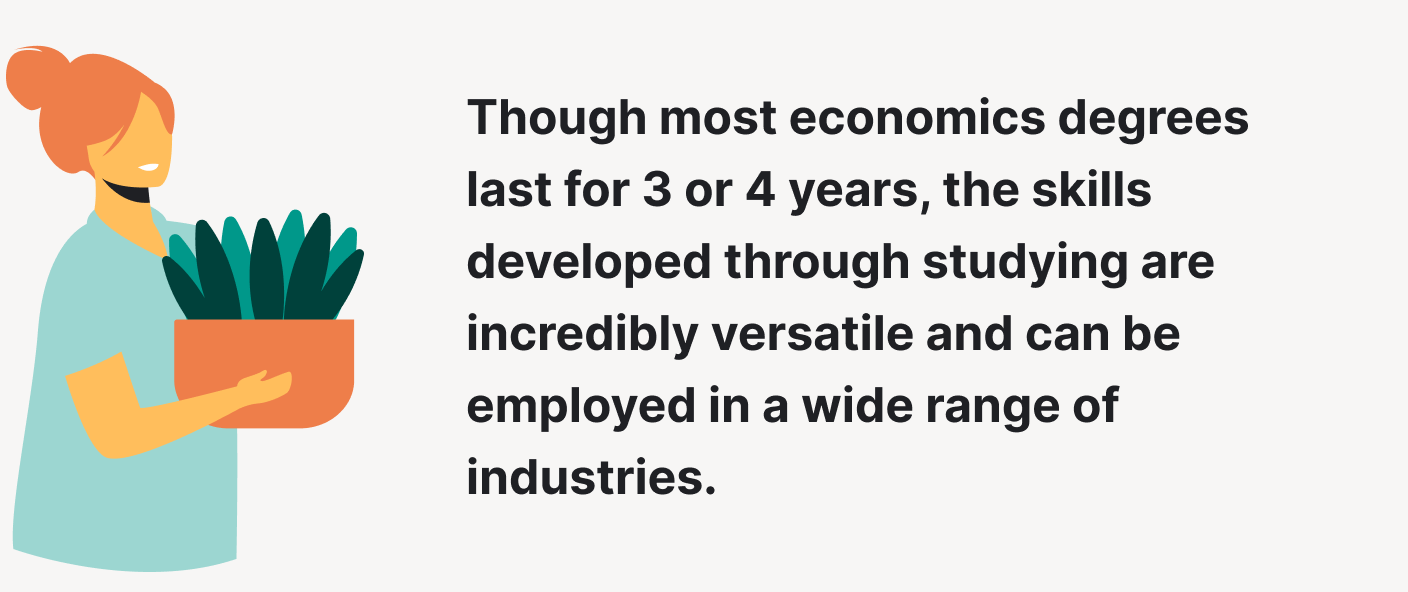
Economics studying is of utmost importance nowadays. It helps to gain a better understanding of processes that put everything in motion.
Economics is quite broad, so it has a great variety of subfields. And this is a fantastic opportunity for us to generate as many essay ideas as possible. Here, you will find great economic topics for your paper. As mentioned before, we have divided them into several sections to ease your selection process. There’s a wide selection of free college essays samples on economics in our database, too. So be sure to check that out.
🤝 Socio-Economic Essay Topics
- The economic impact of racial segregation in America in the 1950s.
- Designing a just socio-economic system.
- Socio-economic status of Hong Kong in modern-day China. Explain how the city of Hong Kong gained a special status in China. Why did it emerge as one of the most important cities in its economy? Comment on the significance of Hong Kong in the international economic arena.
- Economic growth in the United States in the post-World War 2 period.
- Mobile banking in Saudi Arabia: towards understanding the factors that affect the sector.
- The importance of Dior’s bar suit to the women’s fashion industry.
- Economic problems in the 1980’s Soviet Union. Talk about the significant problems with the economy the USSR had in the 1980s. What role did they play in its collapse?
- What socio-economic problems did segregation in South Africa cause?
- History of economic development in the UAE. Discuss the economic miracle in the UAE and Dubai. Explain how the government could turn the city of Dubai into one of the most famous tourist destinations. What strategies were applied?
- Gender inequality and socio-economic development .
- The problem of poverty in Venezuela.
- How the socio-economic and political position of women changed between 1880 and 1940.
- The economic impact of COVID-19 on global trade.

- How do the three main economic groups interact with each other? There are three critical economic groups: – Consumers – Producers – Government Analyze the interaction of these groups with each other.
- Extended essay: how the study of economic data helped our society to advance?
- Western industrialization socio-economic impacts.
- Inequality at the top: not all billionaires have the same powers. Analyze billionaires’ net worth, liquidity, political power, and wealth security. Explain why they have unequal social status. What factors determine the influence of billionaires?
- An analysis of systems that help us measure agricultural development in a country.
- Is social media a useful tool for brand promotion?
- The phenomenon of dualism in economic development.
🗺️ International Economics Essay Topics
- Globalization and its impact on international economic relations. Define the term globalization. What role does globalization play in international economic relations? Provide specific examples of globalization’s impact on the global political economy.
- The lack of justice for the cheap international labor market. Discuss the issue of cheap labor in various countries. Why do some workers often lack fundamental human rights while others abuse moral norms? Analyze the causes and effects of inequality in the workplace.
- Japan macroeconomics: problems and possible solutions.
- The issue of mercantilism in the history of Great Britain. Analyze the rise and development of mercantilism in the history of Great Britain. To solidify your ideas, provide persuasive arguments, and appropriate examples of mercantilism.
- Why does the problem of environmental protection remain unresolved among global economies?
- Nissan Motor company’s international business.
- International environmental concerns in economics: the case of China .
- The issue of international criminal justice in industry. Explain why international businesses often avoid criminal justice after wrongdoings. Select one case of unethical behavior of a company’s CEO or regular employee. Briefly introduce the problem. What were the causes and effects? How was the issue resolved? Express your own opinion regarding the lack of criminal justice in business.
- The economy of Singapore and its role in international trade.
- International microeconomics trade dispute case study: US-China dispute on the exportation of raw materials.
- The phenomenon of the “gig economy” and its impact on the global economy.
- The effect of population growth in the international economy.
- International economics in the context of globalization.
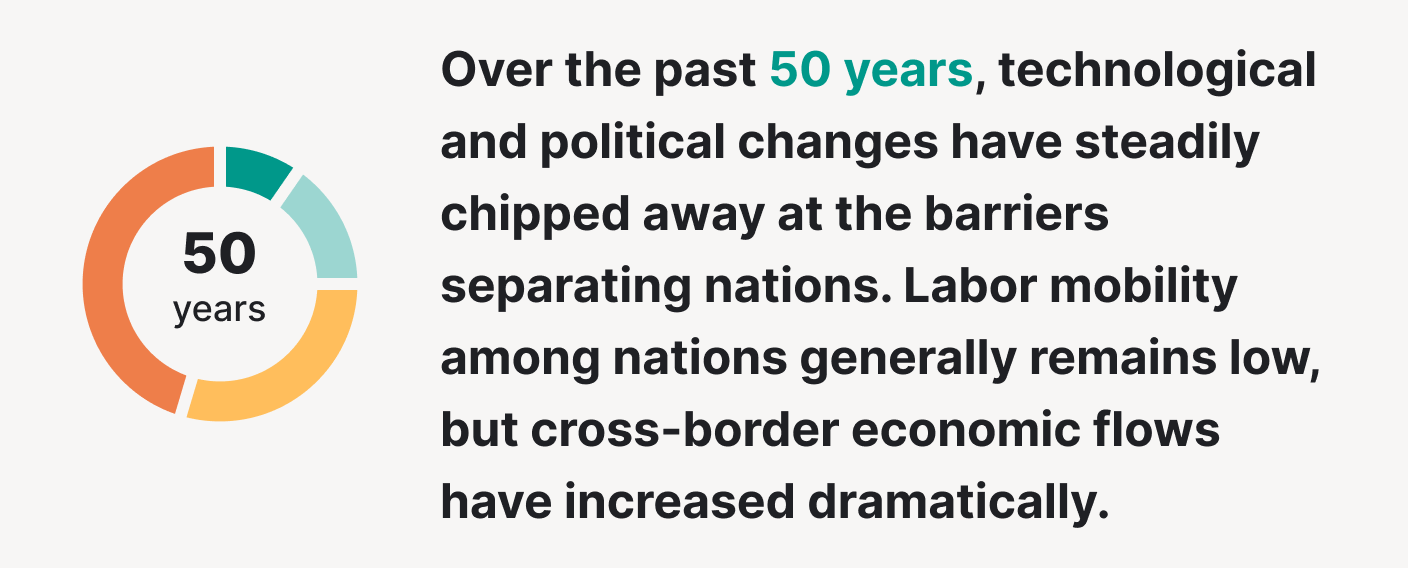
- How does Brexit affect the economy of the European Union? Analyze the immediate impact of Brexit on the EU’s economy. Predict future advantages and disadvantages of Brexit for both: Great Britain and the EU.
- South Africa: international agribusiness, trade, and financing.
- Historical essay: the economy of the Dutch East India company.
- The issue of Mozambique’s economy and possible solutions. Investigate the issue of extreme poverty in Mozambique. What are some possible solutions to the problem of poverty? Base your suggestions on the country’s cultural, historical, and geographical aspects.
- Imbalances in the global economy. Discuss the imbalances between trading countries on the scale of the global economy. What solutions would you suggest to deal with this issue?
- How will global economies adapt to China’s growing power?
- Etihad Airways company managerial economics.
🛠️ Labor Economics Essay Topics
- Ford Motor company’s labor economics.
- Labor economics: child labor.
- The UPS firm perspective: the labor market.
- Gender inequality of wage rate in modern business. Research how and why gender inequality is still an issue in the modern world of economics. What are some ways to deal with the problem? Present your ideas accurately and effectively. Provide solid arguments and appropriate examples to prove your position.
- What are the best ways to increase labor productivity in business?
- Labor unions adverse effects on economics.
- The decrease of the labor force in modern industries. Talk about the rising rates of robotization in the majority of industries. How will it affect the traditional labor force? Comment on the problem of unemployment caused by labor automatization.
- Violations of labor rights of workers.
- Modern labor essay: how can an entrepreneur guarantee the minimum wage to their workers?
- How can labor geography help develop a special economic zone? Talk about labor geography and its effects on developing an exclusive economic zone. How does the geopolitical location of a particular country influence its level of economic development?
- Entrepreneurship in the organic cosmetics sphere.
- Gender-oriented labor trade unions. A case study. Discuss the gender-oriented trade unions and analyze their impact on our society.
- Child labor in the Turkish cotton industry.

- The connection between economic growth and demography. Analyze the connection between economic growth and its demographic context. Investigate both sides: – The issue of overpopulation – The problem of low birth rate. From an economic perspective, what problem is more dangerous?
- The issue of sex discrimination in the workplace.
- The effects of Landrum-Griffin Labor Act. Explore the labor Act of Landrum-Griffin that was passed in the US Congress in 1959. Discuss its implications and consequences. Discuss its implications and consequences.
🌆 Urban Economics Essay Topics
- Cities and their role in aggregate economics.
- Urbanization in Hong Kong and its effects on citizens.
- The urban planning of the city of New York: a critical analysis. Analyze the urban history of NY. How has the city been developing? Discuss revolutionary solutions to the past and problems of modern times.
- The impact of a city’s design on the local traffic.
- Dubai’s spatial planning: creative solutions for building a city in the desert.
- Globalization, urban political economy, and economic restructuring.
- How do urban areas affect local wildlife? Comment on how modern production technologies in urban areas impact the natural diversity of wildlife. What impact does the rapid economic progress have on the environment? Suggest possible solutions.
- Urban sociology: does the city make us better people?
- Why should people be more careful about investing in real estate? Discuss the issues of overinvestment into real estate. Consider the economic crisis of 2008 as an example.
- How can regional authorities help improve a city?
- Urban life and its effects on education.
- The economic development of a city’s metropolitan area: challenges and solutions.
- Main factors for the emergence of cities in the Middle Ages.
- The ethics of relocation: is it justified? Talk about the case of relocating locals when building projects of great magnitude. To what extent can it be justified? Mention its economic and ethical side.
- The difficulties behind the construction of “green” buildings. Discuss the relatively new phenomenon of environmentally friendly buildings. Analyze both sides: the pros and cons. What obstacles lie behind the “green” building? What opportunities do the “green” buildings offer? Elaborate on your ideas by providing clear arguments or counterarguments.
- What factors play a critical role in the success of retail productivity in cities?
⚽ Sports Economics Essay Topics
- Do teams with higher budgets perform better on the field?
- Corruption in European football leagues: a critical analysis. Investigate the corruption issue in the European football leagues. State reasons and solutions for the problem.
- The managerial catastrophe of Arsenal F.C.

- The NextG sports company’s communication planning.
- Roger D. Blair’s Sports Economics literary review. Write a literary analysis of Sports Economics by Roger D. Blair. Discuss his opinion on the economy of sports. Do you agree or disagree with his position? Provide compelling supportive arguments or strong counterarguments.
- How significant is the impact factor of a local team on a city’s economy?
- Kinsmen Sports Centre: marketing metrics innovation.
- What role does statistical data play in sports? Analyze the part of economic statistical data in different sports organizations. How can statistics help to develop an effective financing plan? Comment on the impact of financing on the performance of a sports club.
- Sports and energy drinks marketing analysis.
- Is there a connection between the lack of money and any contemporary issues in a sports team?
- Performance-enhancing drugs in sports.
- The business of FIFA: a financial analysis. Investigate the finances of FIFA. What economic factors make them so influential in the modern world of football?
- The global sports retail industry.
- The Olympics: logistics and economy. Discuss the logistics behind the Olympics Games event. How the Olympic Games impact the economy of the host country?
💉 Health Economics Essay Topics
- Is bioprinting the new future of medicine? Analyze the new market of organ printing and discuss its challenges. Investigate bioprinting from an economic perspective. Will the outputs cover the inputs? How will bioprinting impact the financial aspect of the health care sector?
- Cost-effectiveness of pharmaceutical products in the United States. Comment on the immense cost-effectiveness of pharmaceuticals. What do you think is the price of pharmaceutical products reasonable? Is it ethical to set extremely high prices on the medicals?
- An economic evaluation of the antibiotics market.
- Health economics-SIC and NAICS.
- The financial side of cancer treatment: is it too expensive? Analyze the market for cancer treatment programs in various countries. Explore its costs and complications. What are some possible ways to reduce the price of cancer treatment and make it more affordable?
- The issue of fast food consumption: a multibillion-dollar market . Fast food has always been one of the notable causes of obesity, diabetes, and other illnesses. Investigate the economic aspect of the issue. Are high profits from fast food production worth peoples’ health conditions?
- History and evolution of healthcare economics.
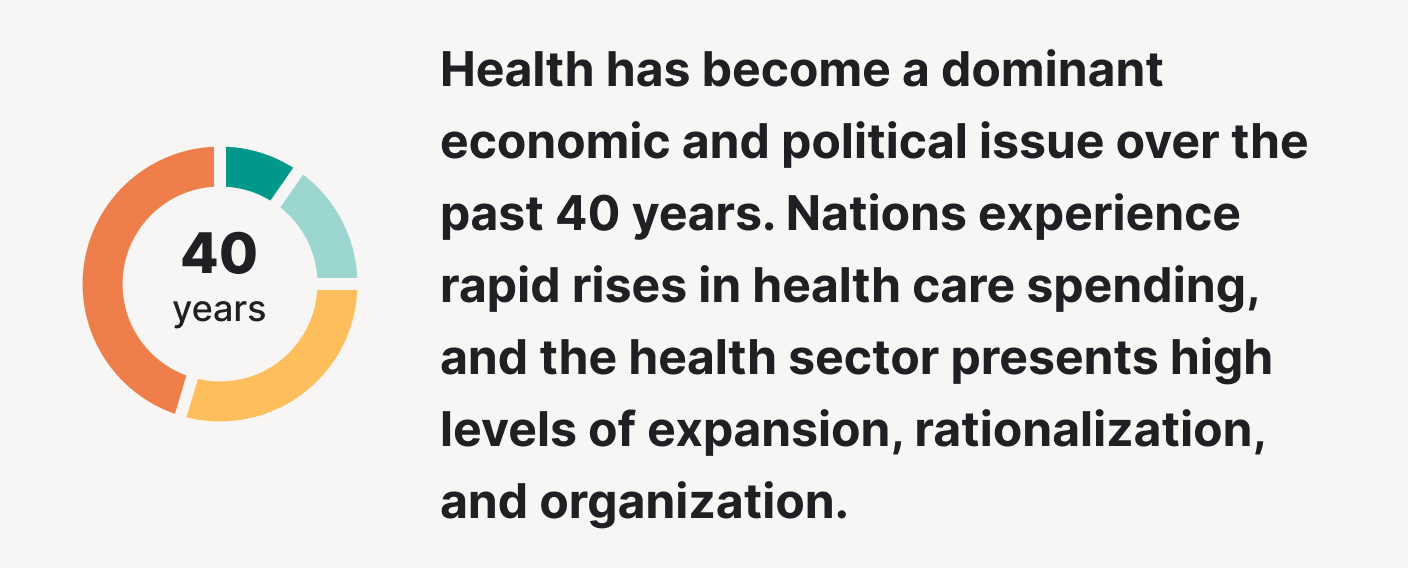
- The financial management of a hospital: a case study.
- The issue of public healthcare in the USA. Write about the long-standing issue of medical sector operation in the USA. Analyze its history, financial, and social aspects.
- Demand in healthcare economics.
- What are the economic outcomes of a global pandemic? Taking the COVID-19 outbreak as an example, conduct research on the effects of a pandemic on the economy. How does it affect local economies? What impact does the quarantine have on the international economy? Provide appropriate examples to support your ideas.
💼 Business Economics Essay Topics
- When does an advertising campaign become unnecessary?
- Sustainable development of a nation’s economic stability. Discuss how a country can create a sustainable economy. Provide bright examples to solidify your position.
- How can a small business compete with monopolies?
- What are the limitations of the Lewis Model?
- The phenomenon of inflation: inevitable liability or a land of opportunity for our economies? Explore the process of inflation in modern economies. Does it only have adverse effects on the countries’ economies? Are there any advantages of inflation? Analyze it from a positive perspective.
- Economics, business, and sugar in the UK.
- The shadow economy of the finance sector. Dive into the backstage of the finance sector and research various “grey” areas where business can be done.
- Chinese and Japanese business systems comparison.
- Oil demand and its changes in the XXI century: a critical analysis. Analyze the oil sector and write about its fluctuation in the XXI century. How did the changes in oil demand affect the global economy?
- The social and economic impact of mass emigration.
🌠 40 More Good Economic Essay Topics
Scrolled through our ideas, but can’t find a suitable topic for yourself? No worries! We have more issues to share with you.
So, don’t stress out. Take a look at our list of economical essay topics. Here are 40 more ideas focusing on globalization and the history of economics.
🏤 Economic Globalization Essay Topics
- The impact of globalization on the tourist industry in the Caribbean . Analyze both: the positive and negative effects of globalization on the Caribbean. To make your paper well-structured, explore two advantages and two disadvantages. Don’t forget to improve your essay with strong evidence and appropriate examples!
- Toyota Motor Corporation: impacts of globalization.
- What are the effects of globalization on developing countries? To what extent do developing countries profit from globalization? Research the subject by comparing various examples.
- Defining globalization and its effects on current trade.
- Economic growth as a result of globalization: proper financial strategies. How can a country successfully achieve prosperity with globalization? Discuss proper economic strategies.
- The socio-political significance of the IT industry’s globalization.
- Human trafficking in developing nations as a result of globalization.
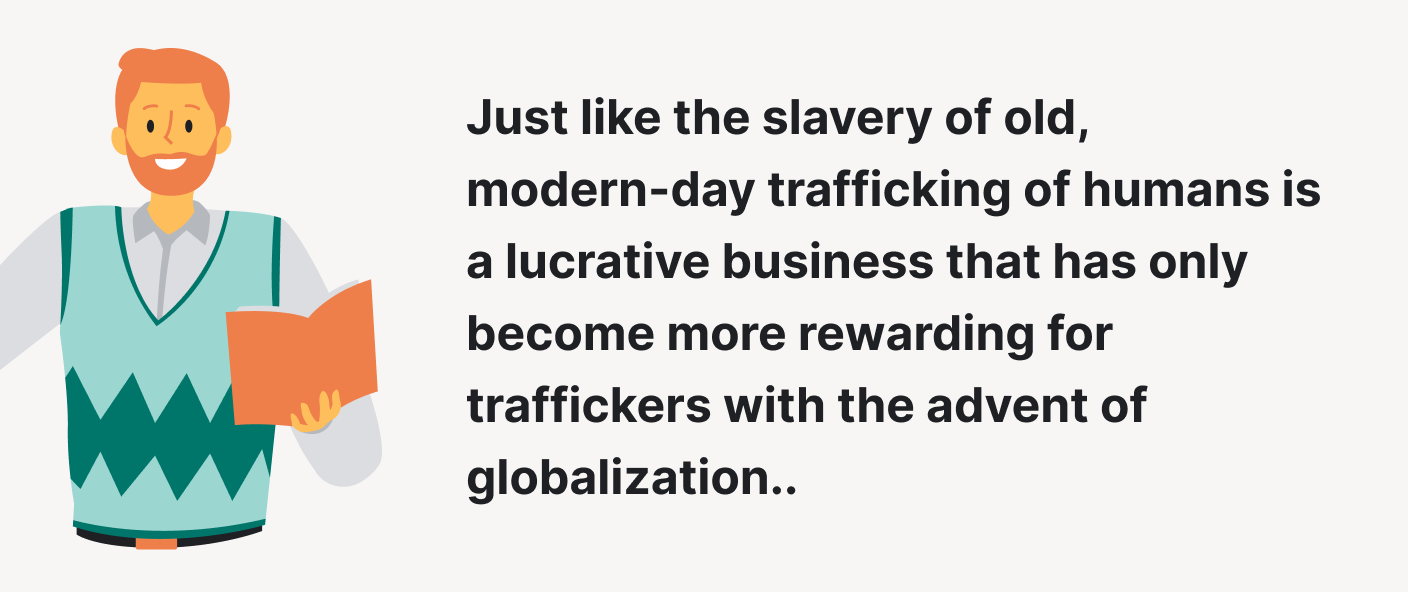
- Globalization and criminal justice policy.
- What are the advantages and disadvantages of globalization?
- Globalization challenges and countermeasures.
- The effect of globalization on worldwide trade and employment rates.
- Economic integration within the European Union: a critical analysis. Talk about the history of economic integration within the EU. What are the negative and positive outcomes of economic integration?
- Globalization and food in Japan.
- Does globalization bring negative effects to cultural heritage and identity?
- The Industrial Revolution as the first step towards globalization. Focus on the Industrial Revolution in Europe. Discuss its precursors and consequences. Why is the revolution considered to be a starting point of globalization? Provide specific examples of globalization processes that occurred in the economic sector after the Industrial revolution.
- Globalization 2.0 an analysis of a book by David Rieff.
- Globalization effects on fundamentalism growth.
- Does direct investment by foreign businesses come with strings attached? Dive into the shady area of globalization and discuss how to direct foreign investment can bring problems of geopolitical scale.
- Effects of globalization on sexuality.
- Alibaba’s globalization strategy: an economic analysis.
🧮 Economic History Essay Topics
- The rapid economic growth of Europe during the Age of Discovery. Analyze the factors that brought economic growth to Europe during the Age of Discovery. What factors contributed to the dynamic economic progress of that time?
- Brazil’s economic history.
- History of capitalism: from the Renaissance to the United States of America. Discuss the origins of capitalism and its centuries-long path towards XXth century America. How the establishment of capitalism impacted the economy of the USA?
- Max Weber: economic history, the theory of bureaucracy, and politics as a vocation.
- 2008 Economic Crisis: origins and fallout. Talk about the 2008 Financial Crisis. Discuss its causes and outcomes. What should have been done differently to avoid the global crisis? Comment on the economic strategies countries used to recover from it.
- The economic marvel of Communist China: from rags to riches.
- What made world economic growth of the Renaissance possible?
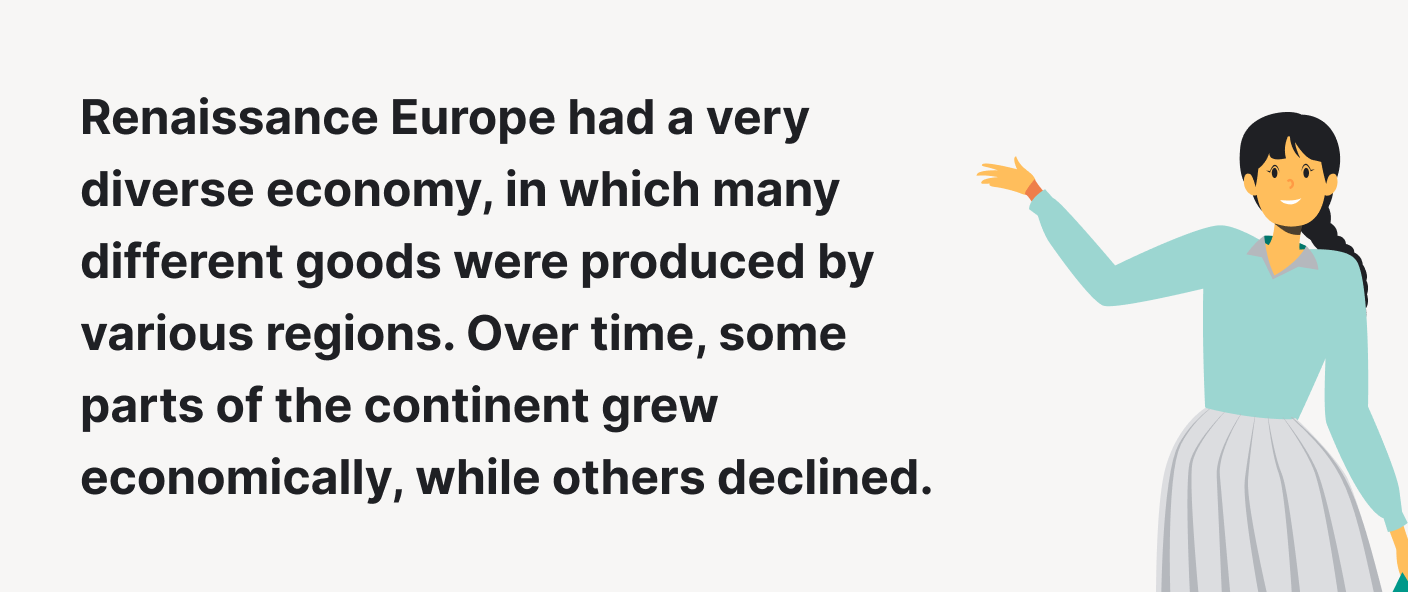
- The economic history of Canada: how did the settlers facilitate economic growth?
- What did the major powers of the XIXth century base their economies on?
- The Rothschilds: political and financial role in the Industrial Revolution. Research the dynasty of Rothschilds and how they came to power. What was their role in Europe’s Industrial Revolution?
- The link between the “oil curse” and the economic history of Latin America.
- Roman Empire’s monetary policy: a socio-economic analysis.
- How did the demand for different goods change their value in the 2000s years? Analyze the demand for goods in the 2000s years and their change in value. Why do these fluctuations in demand for products and services occur?
- The history of economic thought.
- Soviet Union’s economic timeline: from the new Economic Policy to Reformation. Discuss the economic issues of the Soviet Union from the historical perspective. Why did the Soviet Union collapse? What improvements in the financial sector should have been done?
- History of France economics over the past 20 years.
- The history of economic analysis.
- The concept of serfdom and slavery as the main economic engine of the past. Dive into the idea of feudalism and serfdom. Discuss its social and economic aspects.
- The World Bank’s structure, history, activities.
- The history of Islamic banking: concepts and ideas.
💫 How to Write an Economics Essay?
Generally, essay writing on economics has the same structure as any other essay. However, there are some distinctive features of economic papers. Thus, it is essential to figure them out from the very beginning of your work.
You might be wondering what those aspects of the economic paper are. Well, we have an answer.
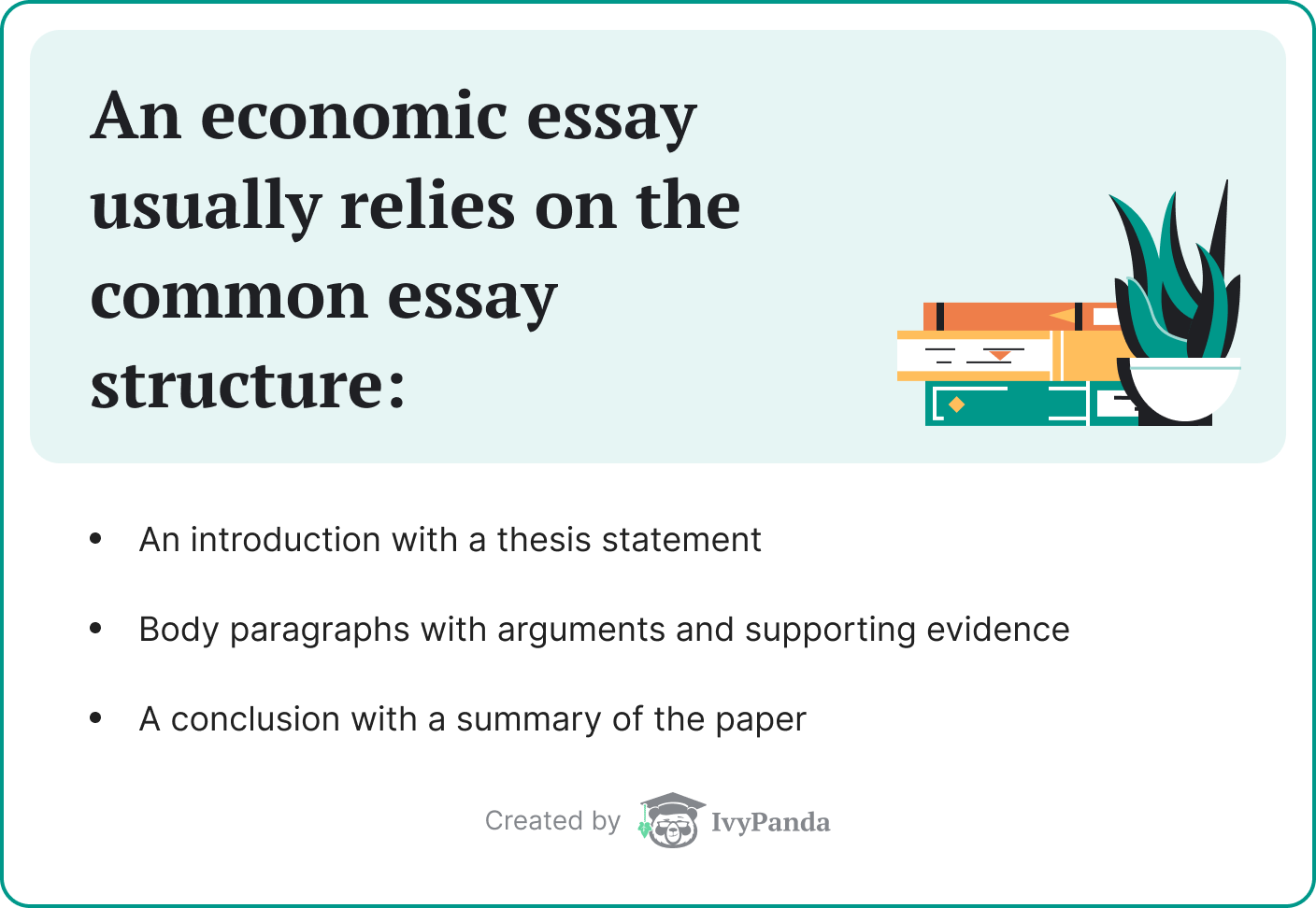
Below, you will find a detailed plan that explains the fundamental concepts of the essay writing process. So, don’t hesitate to use our tips! They are indeed helpful.
Pick a topic and dissect it. Picking the right topic is the very basis of writing a successful essay. Think of something that you will be interested in and make sure you understand the issue clearly. Also, don’t forget to check our ultimate economics essay topics and samples list!
Research it. After selecting the right idea from our economical essay topics, research your subject thoroughly. Try to find every fascinating and intriguing detail about it. Remember that you can always ask your fellow students, friends, or a teacher for help.
Come up with a thesis statement. A thesis statement is an essential element of your essay. It will determine your focus and guide the readers throughout your paper. Make your thesis secure and try to catch the reader’s attention using context and word choice.
Outline your essay. Never underestimate the power of a well-structured outline! Creating an essay outline can significantly help you to determine your general plan. Evaluate which economic framework you will be using to address the issue. State the main points of your thesis and antithesis. Make sure that they answer the central question of your work.
Write your introduction. First and foremost, a practical introduction should capture the readers’ attention and state the essay’s key topic. So, put enough effort to develop an outstanding introduction. It will create the first impression of your paper.
Moreover, an introduction should include a thesis statement. As we have mentioned above, a thesis plays a crucial role. Thus, make sure it is clearly stated.
Another significant feature of the introduction is its coherence with the body of your essay. Consequently, the introductory paragraph’s last statement has to present the subject of the next section, generically. Also, keep in mind that no more than three key points can be discussed in a paper, even if it is an extended essay.
Thoroughly work on the body paragraphs. Usually, the body of the essay contains several paragraphs. The number of these paragraphs will depend on the nature of your question. Be sure to create one section for every critical point that you make. This will make your paper properly-structured, and the reader will quickly get your ideas. For your convenience, we created a plan to develop your ideas in each paragraph, So, use it and make your writing process easier!
- Argument. Present your argument in the topic sentence of the paragraph in a way that directly answers the question. A hint: the most effective way to introduce the critical point is to place the topic sentence at the beginning of the paragraph. This will help the readers to concentrate their attention on a specific idea.
- Comment and discussion. Explain the meaning of your argument and provide an economic analysis. Present clear evidence and persuasive arguments to solidify your position.
- Connection. Link your comments with the vital point of the paragraph. Demonstrate the coherence of your evidence with the point.
- Diagrams, tables, charts. If necessary, provide the reader with visual aids. Sometimes, an appropriate diagram or a suitable chart can say more than words. Besides, your paper will look more professional if you use any kind of visual aids.
Conclude your essay. In your conclusion, summarize and synthesize your work by restating your thesis. Also, it is crucial to strengthen it by mentioning the practical value of your findings. Remember to make your essay readable by choosing appropriate wording and avoiding too complex grammar constructions.

Thank you for visiting our page! Did you enjoy our article and learned something new? We are glad to help you. Don’t forget to leave a comment and share the article with others!
🔗 References
- High School Economics Topics: Econlib, The Library of Economics and Liberty
- Guide to Writing an Economics Essay: The Economics Tutor
- How to Write the Introduction of Your Development Economics Paper: David Evans, Center For Global Development
- Senior Essay: Department of Economics, Yale University
- Developing A Thesis: Maxine Rodburg and The Tutors of the Writing Center at Harvard University
- Academic Essay Writing, Some Guidelines: Department of Economics, Carleton University
- The Writing Process: Writing Centre Resource Guide, LibGuides at Dalhousie University
- Research Papers: KU Writing Center, the University of Kansas
- Unpacking the Topic: University of Southern Queensland
- Economic Issues: PIIE, Peterson Institute for International Economics
- Areas of Research: EPI, Economic Policy Institute
- Top 100 Economics Blogs Of 2023: Prateek Agarwal, Intelligent Economist
- Current Environmental Economic Topics, Environmental Economics: US EPA, United States Environmental Protection Agency
- Hot Topics in the U.S. Economy: The Balance
- Share via Facebook
- Share via Twitter
- Share via LinkedIn
- Share via email
- PRO Courses Guides New Tech Help Pro Expert Videos About wikiHow Pro Upgrade Sign In
- EDIT Edit this Article
- EXPLORE Tech Help Pro About Us Random Article Quizzes Request a New Article Community Dashboard This Or That Game Popular Categories Arts and Entertainment Artwork Books Movies Computers and Electronics Computers Phone Skills Technology Hacks Health Men's Health Mental Health Women's Health Relationships Dating Love Relationship Issues Hobbies and Crafts Crafts Drawing Games Education & Communication Communication Skills Personal Development Studying Personal Care and Style Fashion Hair Care Personal Hygiene Youth Personal Care School Stuff Dating All Categories Arts and Entertainment Finance and Business Home and Garden Relationship Quizzes Cars & Other Vehicles Food and Entertaining Personal Care and Style Sports and Fitness Computers and Electronics Health Pets and Animals Travel Education & Communication Hobbies and Crafts Philosophy and Religion Work World Family Life Holidays and Traditions Relationships Youth
- Browse Articles
- Learn Something New
- Quizzes Hot
- This Or That Game New
- Train Your Brain
- Explore More
- Support wikiHow
- About wikiHow
- Log in / Sign up
- Education and Communications
- College University and Postgraduate
- Academic Writing
How to Write a Good Economics Essay
Last Updated: March 7, 2023 References
This article was co-authored by Emily Listmann, MA . Emily Listmann is a private tutor in San Carlos, California. She has worked as a Social Studies Teacher, Curriculum Coordinator, and an SAT Prep Teacher. She received her MA in Education from the Stanford Graduate School of Education in 2014. This article has been viewed 127,375 times.
A good economics essay requires a clear argument that is well-supported by appropriately referenced evidence. Research your topic thoroughly and then carefully plan out your essay. A good structure is essential, as is sticking closely to the main essay question. Be sure to proofread your essay and try to write in formal and precise prose.
Preparing to Write Your Essay

- For example a question such as “Discuss the macroeconomic consequences of rising house prices, alongside falling interest rates” could be divided into 2 parts: 1 part could be on the effects of rising prices, and 1 on the effects of falling interest rates.
- In this example you could begin by discussing each separately and then bringing the 2 together and analysing how they influence each other.
- Be sure to keep the question at the forefront of your mind and don’t veer off topic. [1] X Research source

- Be sure that you understand all the key terms that you are being asked about.
- Try to keep your reading focussed closely to the essay question.
- Don’t forget to look at any lecture or class notes you have made.
- 3 Come up with a thesis statement . A thesis statement is the main argument you will make in your essay. It should be 1-2 sentences long and respond to the essential question that’s being asked. The thesis will help you structure the body of your essay, and each point you make should relate back to the thesis.

- Once you have put together a list of key points, then try to add in some more detail that brings in elements from your research.
- When you come to write out your essay, you can develop a paragraph based on each point.

- All of the evidence and explanation will be in the main body of the essay.
- Order the key points in the body of your essay in such a way that they flow logically.
- If you are writing a longer essay, you can break the main body into different sections. [2] X Research source
- If you have a word limit, be sure to take this into account when you are planning.
- Allocate yourself a rough number of words per section.
- The introduction and conclusion can be just a paragraph each.
Writing the Essay

- What your essay is about.
- What material you will cover in the essay.
- What your argument is. [3] X Research source

- Having this stated clearly at the start can help you to stay focussed on the question as you work your way through the essay.
- Try writing out this one or two sentence statement and sticking it up in front of you as you write, so it’s stays at the forefront of your mind.

- Try to begin each paragraph with a sentence that outlines what the paragraph will cover.
- Look at the opening sentence of each paragraph and ask yourself if it is addressing the essay question. [5] X Research source

- Try to engage with arguments that run counter to yours, and use the evidence you have found to show the flaws.
- It might help to imagine someone reading the essay, and anticipating the objections that he might raise.
- Showing that you have thought about potential problems, and you can make an argument that overcomes them, is a hallmark of an excellent essay. [6] X Research source
- If there is conflicting evidence, discuss it openly and try to show where the weight of the evidence lies. [7] X Research source
- Don’t just ignore the evidence that runs counter to your argument.

- In the conclusion you can add a few sentences that show how your essay could be developed and taken further.
- Here you can assert why the question is important and make some tentative suggestions for further analysis.
Proofreading and Making Revisions

- As you read through it, think about how closely you stick to main overarching question.
- If you notice paragraphs that drift off into other areas, you need to be tough and cut them out.
- You have a limited number of words so it’s essential to make every one count by keeping tightly focussed on the main question.

- Think about how you use the evidence too. Do you critically engage with it, or do you merely quote it to support your point?
- A good analytical essay such discuss evidence critically at all times.
- Even if the evidence supports your argument, you need to show that you have thought about the value of this particular piece of data.
- Try to avoid making any assumptions, or writing as if something were beyond dispute. [10] X Research source

- Remember an academic essay should be written in a formal style, so avoid colloquialisms.
- Avoid contractions, such as “don’t”, or “won’t”.
- Try to avoid paragraphs that are more than ten or fifteen lines long.
- Think about how it looks on the page. [12] X Research source

- Always include a bibliography, but don’t include references to things you haven’t read or didn’t inform your argument. [13] X Research source
- Your teacher will know if you just add a load of titles into your bibliography that are not evidenced in the body of your essay.
- Always follow the bibliography format used by your department or class.
Community Q&A
You Might Also Like

- ↑ http://www.economicshelp.org/help/tips-economic-essays/
- ↑ http://www.writing.utoronto.ca/advice/planning-and-organizing/organizing
- ↑ http://carleton.ca/economics/courses/writing-preliminaries/academic-essay-writing/
- ↑ https://www.economicsnetwork.ac.uk/archive/lse_writing/page_11.htm
- ↑ http://homes.chass.utoronto.ca/~mcmillan/writing.pdf
- ↑ https://www.royalholloway.ac.uk/economics/documents/pdf/essaywriting-departmentofeconomics.pdf
About This Article

Before you begin writing your economics essay, make sure to carefully read the prompt so that you have a clear sense of the paper's purpose and scope. Once you have read the prompt, conduct research using your textbook and relevant articles. If you cannot find research materials, ask your instructor for recommendations. After your research is done, construct a 1-2 sentence thesis statement and begin outlining your main ideas so that your essay will have a clear structure. Make sure to leave time to write a draft and revise your work before it is due. If you want to learn more, like how to cite the sources you used for your essay, keep reading the article! Did this summary help you? Yes No
- Send fan mail to authors
Reader Success Stories
Twyla Kirkpatrick
Dec 8, 2020
Did this article help you?

Arshad Bhatti
Sep 10, 2017
Fungai Samantha Zuva
Jan 30, 2019
James Smith
Oct 2, 2016
Mallesh Itti
Jul 10, 2022

Featured Articles

Trending Articles

Watch Articles

- Terms of Use
- Privacy Policy
- Do Not Sell or Share My Info
- Not Selling Info
wikiHow Tech Help Pro:
Develop the tech skills you need for work and life
Bank Runs, Fragility, and Regulation
We examine banking regulation in a macroeconomic model of bank runs. We construct a general equilibrium model where banks may default because of fundamental or self-fulfilling runs. With only fundamental defaults, we show that the competitive equilibrium is constrained efficient. However, when banks are vulnerable to runs, banks’ leverage decisions are not ex-ante optimal: individual banks do not internalize that higher leverage makes other banks more vulnerable. The theory calls for introducing minimum capital requirements, even in the absence of bailouts.
The views expressed herein are those of the authors and not necessarily those of the Federal Reserve Bank of Minneapolis, the Federal Reserve System, or the National Bureau of Economic Research.
MARC RIS BibTeΧ
Download Citation Data
More from NBER
In addition to working papers , the NBER disseminates affiliates’ latest findings through a range of free periodicals — the NBER Reporter , the NBER Digest , the Bulletin on Retirement and Disability , the Bulletin on Health , and the Bulletin on Entrepreneurship — as well as online conference reports , video lectures , and interviews .

Take a look at the latest research from MIT Economics faculty, including published work and newly-released working papers.
Working Papers
The simple macroeconomics of ai, incentive-compatible unemployment reinsurance for the euro area.

Risky Business: Why Insurance Markets Fail and What To Do About It

Cooking to Save Your Life
Published papers.
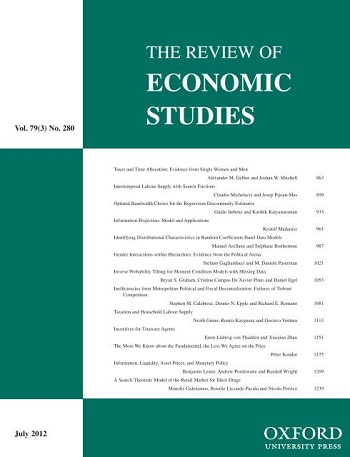
Equilibrium Analysis in Behavioral One-Sector Growth Models
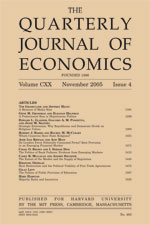
Inference on Winners

Labs and Centers
Research news.

Study finds workers misjudge wage markets

Simon Jäger receives 2024 In_equality Research Award
- Browse All Articles
- Newsletter Sign-Up
Economics →

- 11 Apr 2024
- In Practice
Why Progress on Immigration Might Soften Labor Pains
Long-term labor shortages continue to stoke debates about immigration policy in the United States. We asked Harvard Business School faculty members to discuss what's at stake for companies facing talent needs, and the potential scenarios on the horizon.
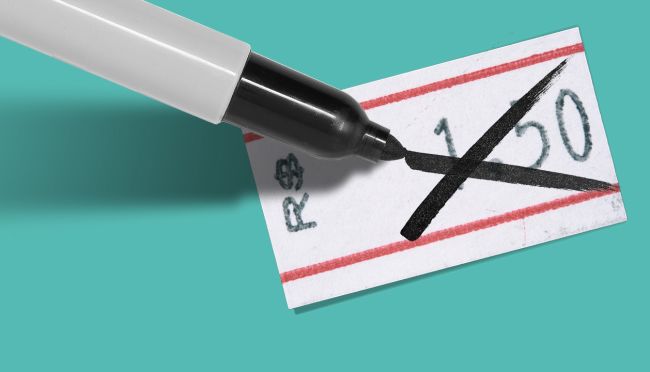
- 01 Apr 2024
Navigating the Mood of Customers Weary of Price Hikes
Price increases might be tempering after historic surges, but companies continue to wrestle with pinched consumers. Alexander MacKay, Chiara Farronato, and Emily Williams make sense of the economic whiplash of inflation and offer insights for business leaders trying to find equilibrium.

- 29 Jan 2024
- Research & Ideas
Do Disasters Rally Support for Climate Action? It's Complicated.
Reactions to devastating wildfires in the Amazon show the contrasting realities for people living in areas vulnerable to climate change. Research by Paula Rettl illustrates the political ramifications that arise as people weigh the economic tradeoffs of natural disasters.

- 10 Jan 2024
Technology and COVID Upended Tipping Norms. Will Consumers Keep Paying?
When COVID pushed service-based businesses to the brink, tipping became a way for customers to show their appreciation. Now that the pandemic is over, new technologies have enabled companies to maintain and expand the use of digital payment nudges, says Jill Avery.

- 17 Aug 2023
‘Not a Bunch of Weirdos’: Why Mainstream Investors Buy Crypto
Bitcoin might seem like the preferred tender of conspiracy theorists and criminals, but everyday investors are increasingly embracing crypto. A study of 59 million consumers by Marco Di Maggio and colleagues paints a shockingly ordinary picture of today's cryptocurrency buyer. What do they stand to gain?

- 15 Aug 2023
Why Giving to Others Makes Us Happy
Giving to others is also good for the giver. A research paper by Ashley Whillans and colleagues identifies three circumstances in which spending money on other people can boost happiness.

- 13 Mar 2023
What Would It Take to Unlock Microfinance's Full Potential?
Microfinance has been seen as a vehicle for economic mobility in developing countries, but the results have been mixed. Research by Natalia Rigol and Ben Roth probes how different lending approaches might serve entrepreneurs better.

- 23 Jan 2023
After High-Profile Failures, Can Investors Still Trust Credit Ratings?
Rating agencies, such as Standard & Poor’s and Moody's, have been criticized for not warning investors of risks that led to major financial catastrophes. But an analysis of thousands of ratings by Anywhere Sikochi and colleagues suggests that agencies have learned from past mistakes.

- 29 Nov 2022
How Much More Would Holiday Shoppers Pay to Wear Something Rare?
Economic worries will make pricing strategy even more critical this holiday season. Research by Chiara Farronato reveals the value that hip consumers see in hard-to-find products. Are companies simply making too many goods?

- 21 Nov 2022
Buy Now, Pay Later: How Retail's Hot Feature Hurts Low-Income Shoppers
More consumers may opt to "buy now, pay later" this holiday season, but what happens if they can't make that last payment? Research by Marco Di Maggio and Emily Williams highlights the risks of these financing services, especially for lower-income shoppers.

- 01 Sep 2022
- What Do You Think?
Is It Time to Consider Lifting Tariffs on Chinese Imports?
Many of the tariffs levied by the Trump administration on Chinese goods remain in place. James Heskett weighs whether the US should prioritize renegotiating trade agreements with China, and what it would take to move on from the trade war. Open for comment; 0 Comments.

- 05 Jul 2022
Have We Seen the Peak of Just-in-Time Inventory Management?
Toyota and other companies have harnessed just-in-time inventory management to cut logistics costs and boost service. That is, until COVID-19 roiled global supply chains. Will we ever get back to the days of tighter inventory control? asks James Heskett. Open for comment; 0 Comments.

- 09 Mar 2022
War in Ukraine: Soaring Gas Prices and the Return of Stagflation?
With nothing left to lose, Russia's invasion of Ukraine will likely intensify, roiling energy markets further and raising questions about the future of globalization, says Rawi Abdelal. Open for comment; 0 Comments.

- 10 Feb 2022
Why Are Prices So High Right Now—and Will They Ever Return to Normal?
And when will sold-out products return to store shelves? The answers aren't so straightforward. Research by Alberto Cavallo probes the complex interplay of product shortages, prices, and inflation. Open for comment; 0 Comments.
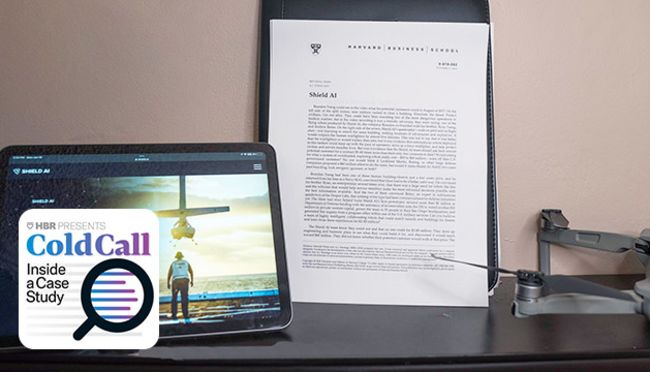
- 11 Jan 2022
- Cold Call Podcast
Can Entrepreneurs and Governments Team Up to Solve Big Problems?
In 2017, Shield AI’s quadcopter, with no pilot and no flight plan, could clear a building and outpace human warfighters by almost five minutes. It was evidence that autonomous robots could help protect civilian and service member lives. But was it also evidence that Shield AI—a startup barely two years past founding—could ask their newest potential customer, the US government, for a large contract for a system of coordinated, exploring robots? Or would it scare them away? Harvard Business School professor Mitch Weiss and Brandon Tseng, Shield AI’s CGO and co-founder, discuss these and other challenges entrepreneurs face when working with the public sector, and how investing in new ideas can enable entrepreneurs and governments to join forces and solve big problems in the case, “Shield AI.” Open for comment; 0 Comments.

- 06 May 2021
How Four Women Made Miami More Equitable for Startups
A case study by Rosabeth Moss Kanter examines what it takes to break gender barriers and build thriving businesses in an emerging startup hub. Open for comment; 0 Comments.

- 20 Apr 2021
- Working Paper Summaries
The Emergence of Mafia-like Business Systems in China
This study sheds light on the political pathology of fraudulent, illegal, and corrupt business practices. Features of the Chinese system—including regulatory gaps, a lack of formal means of property protection, and pervasive uncertainty—seem to facilitate the rise of mafia systems.
- 02 Feb 2021
Nonprofits in Good Times and Bad Times
Tax returns from millions of US nonprofits reveal that charities do not expand during bad times, when need is the greatest. Although they are able to smooth the swings of their activities more than for-profit organizations, nonprofits exhibit substantial sensitivity to economic cycles.

- 01 Feb 2021

Has the New Economy Finally Arrived?
Economists have long tied low unemployment to inflation. James Heskett considers whether the US economic policy of the past four years has shaken those assumptions. Open for comment; 0 Comments.
- 06 Jan 2021
Aggregate Advertising Expenditure in the US Economy: What's Up? Is It Real?
We analyze total United States advertising spending from 1960 to 2018. In nominal terms, the elasticity of annual advertising outlays with respect to gross domestic product appears to have increased substantially beginning in the late 1990s, roughly coinciding with the dramatic growth of internet-based advertising.
Browse Econ Literature
- Working papers
- Software components
- Book chapters
- JEL classification
More features
- Subscribe to new research
RePEc Biblio
Author registration.
- Economics Virtual Seminar Calendar NEW!

Search IDEAS All Articles Papers Chapters Books Software In: Whole record Abstract Keywords Title Author Sort by: new options Relevance Oldest Most recent Most cited Title alphabet Recently added Recent & relevant Relevant & cited Recent & cited From: Any Year 2024 2023 2022 2021 2020 2019 2018 2017 2016 2015 2014 2013 2012 2011 2010 2009 2008 2007 2006 2005 2004 2003 2002 2001 2000 1999 1998 1997 1996 1995 1994 1993 1992 1991 1990 1985 1980 1975 1970 1960 1950 1940 1930 1900 1800 1700 To: Any Year 2024 2023 2022 2021 2020 2019 2018 2017 2016 2015 2014 2013 2012 2011 2010 2009 2008 2007 2006 2005 2004 2003 2002 2001 2000 1999 1998 1997 1996 1995 1994 1993 1992 1991 1990 1985 1980 1975 1970 1960 1950 1940 1930 1900 1800 1700 More advanced search New: sort by citation count and by recently added --> What is IDEAS? IDEAS is the largest bibliographic database dedicated to Economics and available freely on the Internet. Based on RePEc , it indexes over 4,600,000 items of research, including over 4,200,000 that can be downloaded in full text. RePEc is a large volunteer effort to enhance the free dissemination of research in Economics which includes bibliographic metadata from over 2,000 participating archives , including all the major publishers and research outlets. IDEAS is just one of several services that use RePEc data. For some statistics about the holdings on this site, see here . Authors are invited to register with RePEc to create an online profile. Then, anyone finding some of their research here can find your latest contact details and a listing of their other research. They will also receive a monthly mailing about the popularity of their works, their ranking and newly found citations. How do I find on IDEAS what I am looking for?
More services and features.
Follow serials, authors, keywords & more
Public profiles for Economics researchers
Various research rankings in Economics
RePEc Genealogy
Who was a student of whom, using RePEc
Curated articles & papers on economics topics
Upload your paper to be listed on RePEc and IDEAS
New papers by email
Subscribe to new additions to RePEc
EconAcademics
Blog aggregator for economics research
Cases of plagiarism in Economics
About RePEc
Initiative for open bibliographies in Economics
News about RePEc
Questions about IDEAS and RePEc
RePEc volunteers
Participating archives
Publishers indexing in RePEc
Privacy statement
Corrections.
Found an error or omission?
Opportunities to help RePEc
Get papers listed
Have your research listed on RePEc
Open a RePEc archive
Have your institution's/publisher's output listed on RePEc
Get RePEc data
Use data assembled by RePEc
- Search Menu
- Advance articles
- Featured articles
Virtual Issues
- Browse content in B - History of Economic Thought, Methodology, and Heterodox Approaches
- Browse content in B4 - Economic Methodology
- B49 - Other
- Browse content in C - Mathematical and Quantitative Methods
- Browse content in C0 - General
- C01 - Econometrics
- Browse content in C1 - Econometric and Statistical Methods and Methodology: General
- C10 - General
- C11 - Bayesian Analysis: General
- C12 - Hypothesis Testing: General
- C13 - Estimation: General
- C14 - Semiparametric and Nonparametric Methods: General
- C15 - Statistical Simulation Methods: General
- Browse content in C2 - Single Equation Models; Single Variables
- C21 - Cross-Sectional Models; Spatial Models; Treatment Effect Models; Quantile Regressions
- C22 - Time-Series Models; Dynamic Quantile Regressions; Dynamic Treatment Effect Models; Diffusion Processes
- C23 - Panel Data Models; Spatio-temporal Models
- C26 - Instrumental Variables (IV) Estimation
- Browse content in C3 - Multiple or Simultaneous Equation Models; Multiple Variables
- C31 - Cross-Sectional Models; Spatial Models; Treatment Effect Models; Quantile Regressions; Social Interaction Models
- C33 - Panel Data Models; Spatio-temporal Models
- C34 - Truncated and Censored Models; Switching Regression Models
- C35 - Discrete Regression and Qualitative Choice Models; Discrete Regressors; Proportions
- C36 - Instrumental Variables (IV) Estimation
- Browse content in C4 - Econometric and Statistical Methods: Special Topics
- C41 - Duration Analysis; Optimal Timing Strategies
- C44 - Operations Research; Statistical Decision Theory
- Browse content in C5 - Econometric Modeling
- C50 - General
- C51 - Model Construction and Estimation
- C52 - Model Evaluation, Validation, and Selection
- C53 - Forecasting and Prediction Methods; Simulation Methods
- C54 - Quantitative Policy Modeling
- C55 - Large Data Sets: Modeling and Analysis
- C57 - Econometrics of Games and Auctions
- Browse content in C6 - Mathematical Methods; Programming Models; Mathematical and Simulation Modeling
- C61 - Optimization Techniques; Programming Models; Dynamic Analysis
- C62 - Existence and Stability Conditions of Equilibrium
- C63 - Computational Techniques; Simulation Modeling
- C67 - Input-Output Models
- Browse content in C7 - Game Theory and Bargaining Theory
- C70 - General
- C72 - Noncooperative Games
- C73 - Stochastic and Dynamic Games; Evolutionary Games; Repeated Games
- C78 - Bargaining Theory; Matching Theory
- Browse content in C8 - Data Collection and Data Estimation Methodology; Computer Programs
- C83 - Survey Methods; Sampling Methods
- Browse content in C9 - Design of Experiments
- C90 - General
- C91 - Laboratory, Individual Behavior
- C92 - Laboratory, Group Behavior
- C93 - Field Experiments
- Browse content in D - Microeconomics
- Browse content in D0 - General
- D01 - Microeconomic Behavior: Underlying Principles
- D02 - Institutions: Design, Formation, Operations, and Impact
- D03 - Behavioral Microeconomics: Underlying Principles
- Browse content in D1 - Household Behavior and Family Economics
- D11 - Consumer Economics: Theory
- D12 - Consumer Economics: Empirical Analysis
- D13 - Household Production and Intrahousehold Allocation
- D14 - Household Saving; Personal Finance
- D15 - Intertemporal Household Choice: Life Cycle Models and Saving
- D18 - Consumer Protection
- Browse content in D2 - Production and Organizations
- D21 - Firm Behavior: Theory
- D22 - Firm Behavior: Empirical Analysis
- D23 - Organizational Behavior; Transaction Costs; Property Rights
- D24 - Production; Cost; Capital; Capital, Total Factor, and Multifactor Productivity; Capacity
- D25 - Intertemporal Firm Choice: Investment, Capacity, and Financing
- D29 - Other
- Browse content in D3 - Distribution
- D30 - General
- D31 - Personal Income, Wealth, and Their Distributions
- Browse content in D4 - Market Structure, Pricing, and Design
- D40 - General
- D41 - Perfect Competition
- D42 - Monopoly
- D43 - Oligopoly and Other Forms of Market Imperfection
- D44 - Auctions
- D47 - Market Design
- Browse content in D5 - General Equilibrium and Disequilibrium
- D50 - General
- D51 - Exchange and Production Economies
- D52 - Incomplete Markets
- D53 - Financial Markets
- D57 - Input-Output Tables and Analysis
- D58 - Computable and Other Applied General Equilibrium Models
- Browse content in D6 - Welfare Economics
- D60 - General
- D61 - Allocative Efficiency; Cost-Benefit Analysis
- D62 - Externalities
- D63 - Equity, Justice, Inequality, and Other Normative Criteria and Measurement
- D64 - Altruism; Philanthropy
- Browse content in D7 - Analysis of Collective Decision-Making
- D70 - General
- D71 - Social Choice; Clubs; Committees; Associations
- D72 - Political Processes: Rent-seeking, Lobbying, Elections, Legislatures, and Voting Behavior
- D73 - Bureaucracy; Administrative Processes in Public Organizations; Corruption
- D74 - Conflict; Conflict Resolution; Alliances; Revolutions
- D78 - Positive Analysis of Policy Formulation and Implementation
- Browse content in D8 - Information, Knowledge, and Uncertainty
- D80 - General
- D81 - Criteria for Decision-Making under Risk and Uncertainty
- D82 - Asymmetric and Private Information; Mechanism Design
- D83 - Search; Learning; Information and Knowledge; Communication; Belief; Unawareness
- D84 - Expectations; Speculations
- D85 - Network Formation and Analysis: Theory
- D86 - Economics of Contract: Theory
- Browse content in D9 - Micro-Based Behavioral Economics
- D90 - General
- D91 - Role and Effects of Psychological, Emotional, Social, and Cognitive Factors on Decision Making
- D92 - Intertemporal Firm Choice, Investment, Capacity, and Financing
- Browse content in E - Macroeconomics and Monetary Economics
- Browse content in E0 - General
- E03 - Behavioral Macroeconomics
- Browse content in E1 - General Aggregative Models
- E10 - General
- E12 - Keynes; Keynesian; Post-Keynesian
- E13 - Neoclassical
- E17 - Forecasting and Simulation: Models and Applications
- Browse content in E2 - Consumption, Saving, Production, Investment, Labor Markets, and Informal Economy
- E20 - General
- E21 - Consumption; Saving; Wealth
- E22 - Investment; Capital; Intangible Capital; Capacity
- E23 - Production
- E24 - Employment; Unemployment; Wages; Intergenerational Income Distribution; Aggregate Human Capital; Aggregate Labor Productivity
- E25 - Aggregate Factor Income Distribution
- E26 - Informal Economy; Underground Economy
- E27 - Forecasting and Simulation: Models and Applications
- Browse content in E3 - Prices, Business Fluctuations, and Cycles
- E30 - General
- E31 - Price Level; Inflation; Deflation
- E32 - Business Fluctuations; Cycles
- Browse content in E4 - Money and Interest Rates
- E40 - General
- E41 - Demand for Money
- E42 - Monetary Systems; Standards; Regimes; Government and the Monetary System; Payment Systems
- E43 - Interest Rates: Determination, Term Structure, and Effects
- E44 - Financial Markets and the Macroeconomy
- E49 - Other
- Browse content in E5 - Monetary Policy, Central Banking, and the Supply of Money and Credit
- E50 - General
- E51 - Money Supply; Credit; Money Multipliers
- E52 - Monetary Policy
- E58 - Central Banks and Their Policies
- Browse content in E6 - Macroeconomic Policy, Macroeconomic Aspects of Public Finance, and General Outlook
- E60 - General
- E61 - Policy Objectives; Policy Designs and Consistency; Policy Coordination
- E62 - Fiscal Policy
- E65 - Studies of Particular Policy Episodes
- Browse content in E7 - Macro-Based Behavioral Economics
- E70 - General
- E71 - Role and Effects of Psychological, Emotional, Social, and Cognitive Factors on the Macro Economy
- Browse content in F - International Economics
- Browse content in F1 - Trade
- F10 - General
- F11 - Neoclassical Models of Trade
- F12 - Models of Trade with Imperfect Competition and Scale Economies; Fragmentation
- F13 - Trade Policy; International Trade Organizations
- F14 - Empirical Studies of Trade
- F15 - Economic Integration
- F16 - Trade and Labor Market Interactions
- F17 - Trade Forecasting and Simulation
- F18 - Trade and Environment
- F19 - Other
- Browse content in F2 - International Factor Movements and International Business
- F21 - International Investment; Long-Term Capital Movements
- F22 - International Migration
- F23 - Multinational Firms; International Business
- Browse content in F3 - International Finance
- F30 - General
- F31 - Foreign Exchange
- F32 - Current Account Adjustment; Short-Term Capital Movements
- F33 - International Monetary Arrangements and Institutions
- F34 - International Lending and Debt Problems
- F36 - Financial Aspects of Economic Integration
- Browse content in F4 - Macroeconomic Aspects of International Trade and Finance
- F40 - General
- F41 - Open Economy Macroeconomics
- F42 - International Policy Coordination and Transmission
- F43 - Economic Growth of Open Economies
- F44 - International Business Cycles
- Browse content in F5 - International Relations, National Security, and International Political Economy
- F50 - General
- F53 - International Agreements and Observance; International Organizations
- Browse content in F6 - Economic Impacts of Globalization
- F60 - General
- F63 - Economic Development
- F64 - Environment
- F65 - Finance
- Browse content in G - Financial Economics
- Browse content in G0 - General
- G01 - Financial Crises
- G02 - Behavioral Finance: Underlying Principles
- Browse content in G1 - General Financial Markets
- G10 - General
- G11 - Portfolio Choice; Investment Decisions
- G12 - Asset Pricing; Trading volume; Bond Interest Rates
- G13 - Contingent Pricing; Futures Pricing
- G14 - Information and Market Efficiency; Event Studies; Insider Trading
- G15 - International Financial Markets
- G18 - Government Policy and Regulation
- Browse content in G2 - Financial Institutions and Services
- G20 - General
- G21 - Banks; Depository Institutions; Micro Finance Institutions; Mortgages
- G22 - Insurance; Insurance Companies; Actuarial Studies
- G23 - Non-bank Financial Institutions; Financial Instruments; Institutional Investors
- G24 - Investment Banking; Venture Capital; Brokerage; Ratings and Ratings Agencies
- G28 - Government Policy and Regulation
- Browse content in G3 - Corporate Finance and Governance
- G30 - General
- G31 - Capital Budgeting; Fixed Investment and Inventory Studies; Capacity
- G32 - Financing Policy; Financial Risk and Risk Management; Capital and Ownership Structure; Value of Firms; Goodwill
- G33 - Bankruptcy; Liquidation
- G34 - Mergers; Acquisitions; Restructuring; Corporate Governance
- G38 - Government Policy and Regulation
- Browse content in G4 - Behavioral Finance
- G40 - General
- G41 - Role and Effects of Psychological, Emotional, Social, and Cognitive Factors on Decision Making in Financial Markets
- Browse content in H - Public Economics
- Browse content in H0 - General
- H00 - General
- Browse content in H1 - Structure and Scope of Government
- H11 - Structure, Scope, and Performance of Government
- Browse content in H2 - Taxation, Subsidies, and Revenue
- H20 - General
- H21 - Efficiency; Optimal Taxation
- H23 - Externalities; Redistributive Effects; Environmental Taxes and Subsidies
- H24 - Personal Income and Other Nonbusiness Taxes and Subsidies; includes inheritance and gift taxes
- H25 - Business Taxes and Subsidies
- H26 - Tax Evasion and Avoidance
- Browse content in H3 - Fiscal Policies and Behavior of Economic Agents
- H30 - General
- H31 - Household
- Browse content in H4 - Publicly Provided Goods
- H41 - Public Goods
- Browse content in H5 - National Government Expenditures and Related Policies
- H50 - General
- H51 - Government Expenditures and Health
- H52 - Government Expenditures and Education
- H53 - Government Expenditures and Welfare Programs
- H55 - Social Security and Public Pensions
- H56 - National Security and War
- Browse content in H6 - National Budget, Deficit, and Debt
- H60 - General
- H63 - Debt; Debt Management; Sovereign Debt
- Browse content in H7 - State and Local Government; Intergovernmental Relations
- H71 - State and Local Taxation, Subsidies, and Revenue
- H75 - State and Local Government: Health; Education; Welfare; Public Pensions
- Browse content in H8 - Miscellaneous Issues
- H81 - Governmental Loans; Loan Guarantees; Credits; Grants; Bailouts
- Browse content in I - Health, Education, and Welfare
- Browse content in I0 - General
- I00 - General
- Browse content in I1 - Health
- I10 - General
- I11 - Analysis of Health Care Markets
- I12 - Health Behavior
- I13 - Health Insurance, Public and Private
- I14 - Health and Inequality
- I15 - Health and Economic Development
- I18 - Government Policy; Regulation; Public Health
- Browse content in I2 - Education and Research Institutions
- I20 - General
- I21 - Analysis of Education
- I22 - Educational Finance; Financial Aid
- I23 - Higher Education; Research Institutions
- I24 - Education and Inequality
- I25 - Education and Economic Development
- I26 - Returns to Education
- I28 - Government Policy
- Browse content in I3 - Welfare, Well-Being, and Poverty
- I30 - General
- I31 - General Welfare
- I32 - Measurement and Analysis of Poverty
- I38 - Government Policy; Provision and Effects of Welfare Programs
- I39 - Other
- Browse content in J - Labor and Demographic Economics
- Browse content in J0 - General
- J00 - General
- J01 - Labor Economics: General
- J08 - Labor Economics Policies
- Browse content in J1 - Demographic Economics
- J10 - General
- J11 - Demographic Trends, Macroeconomic Effects, and Forecasts
- J12 - Marriage; Marital Dissolution; Family Structure; Domestic Abuse
- J13 - Fertility; Family Planning; Child Care; Children; Youth
- J14 - Economics of the Elderly; Economics of the Handicapped; Non-Labor Market Discrimination
- J15 - Economics of Minorities, Races, Indigenous Peoples, and Immigrants; Non-labor Discrimination
- J16 - Economics of Gender; Non-labor Discrimination
- J17 - Value of Life; Forgone Income
- Browse content in J2 - Demand and Supply of Labor
- J20 - General
- J21 - Labor Force and Employment, Size, and Structure
- J22 - Time Allocation and Labor Supply
- J23 - Labor Demand
- J24 - Human Capital; Skills; Occupational Choice; Labor Productivity
- Browse content in J3 - Wages, Compensation, and Labor Costs
- J30 - General
- J31 - Wage Level and Structure; Wage Differentials
- J32 - Nonwage Labor Costs and Benefits; Retirement Plans; Private Pensions
- J33 - Compensation Packages; Payment Methods
- J38 - Public Policy
- Browse content in J4 - Particular Labor Markets
- J41 - Labor Contracts
- J42 - Monopsony; Segmented Labor Markets
- J44 - Professional Labor Markets; Occupational Licensing
- J47 - Coercive Labor Markets
- Browse content in J5 - Labor-Management Relations, Trade Unions, and Collective Bargaining
- J50 - General
- J52 - Dispute Resolution: Strikes, Arbitration, and Mediation; Collective Bargaining
- Browse content in J6 - Mobility, Unemployment, Vacancies, and Immigrant Workers
- J60 - General
- J61 - Geographic Labor Mobility; Immigrant Workers
- J62 - Job, Occupational, and Intergenerational Mobility
- J63 - Turnover; Vacancies; Layoffs
- J64 - Unemployment: Models, Duration, Incidence, and Job Search
- J65 - Unemployment Insurance; Severance Pay; Plant Closings
- J68 - Public Policy
- Browse content in J7 - Labor Discrimination
- J71 - Discrimination
- Browse content in J8 - Labor Standards: National and International
- J81 - Working Conditions
- J82 - Labor Force Composition
- J83 - Workers' Rights
- Browse content in K - Law and Economics
- Browse content in K0 - General
- K00 - General
- Browse content in K1 - Basic Areas of Law
- K14 - Criminal Law
- Browse content in K3 - Other Substantive Areas of Law
- K31 - Labor Law
- K33 - International Law
- K35 - Personal Bankruptcy Law
- Browse content in K4 - Legal Procedure, the Legal System, and Illegal Behavior
- K40 - General
- K41 - Litigation Process
- K42 - Illegal Behavior and the Enforcement of Law
- Browse content in L - Industrial Organization
- Browse content in L0 - General
- L00 - General
- Browse content in L1 - Market Structure, Firm Strategy, and Market Performance
- L10 - General
- L11 - Production, Pricing, and Market Structure; Size Distribution of Firms
- L12 - Monopoly; Monopolization Strategies
- L13 - Oligopoly and Other Imperfect Markets
- L14 - Transactional Relationships; Contracts and Reputation; Networks
- L15 - Information and Product Quality; Standardization and Compatibility
- Browse content in L2 - Firm Objectives, Organization, and Behavior
- L20 - General
- L22 - Firm Organization and Market Structure
- L23 - Organization of Production
- L25 - Firm Performance: Size, Diversification, and Scope
- Browse content in L3 - Nonprofit Organizations and Public Enterprise
- L31 - Nonprofit Institutions; NGOs; Social Entrepreneurship
- Browse content in L4 - Antitrust Issues and Policies
- L41 - Monopolization; Horizontal Anticompetitive Practices
- L42 - Vertical Restraints; Resale Price Maintenance; Quantity Discounts
- L43 - Legal Monopolies and Regulation or Deregulation
- Browse content in L5 - Regulation and Industrial Policy
- L50 - General
- L51 - Economics of Regulation
- Browse content in L6 - Industry Studies: Manufacturing
- L60 - General
- L62 - Automobiles; Other Transportation Equipment; Related Parts and Equipment
- L63 - Microelectronics; Computers; Communications Equipment
- Browse content in L7 - Industry Studies: Primary Products and Construction
- L71 - Mining, Extraction, and Refining: Hydrocarbon Fuels
- Browse content in L8 - Industry Studies: Services
- L81 - Retail and Wholesale Trade; e-Commerce
- L82 - Entertainment; Media
- Browse content in L9 - Industry Studies: Transportation and Utilities
- L93 - Air Transportation
- L94 - Electric Utilities
- L96 - Telecommunications
- Browse content in M - Business Administration and Business Economics; Marketing; Accounting; Personnel Economics
- Browse content in M0 - General
- M00 - General
- Browse content in M1 - Business Administration
- M11 - Production Management
- M14 - Corporate Culture; Social Responsibility
- Browse content in M2 - Business Economics
- M21 - Business Economics
- Browse content in M3 - Marketing and Advertising
- M31 - Marketing
- M37 - Advertising
- Browse content in M5 - Personnel Economics
- M50 - General
- M51 - Firm Employment Decisions; Promotions
- M52 - Compensation and Compensation Methods and Their Effects
- M54 - Labor Management
- M55 - Labor Contracting Devices
- Browse content in N - Economic History
- Browse content in N1 - Macroeconomics and Monetary Economics; Industrial Structure; Growth; Fluctuations
- N10 - General, International, or Comparative
- N13 - Europe: Pre-1913
- Browse content in N2 - Financial Markets and Institutions
- N20 - General, International, or Comparative
- Browse content in N3 - Labor and Consumers, Demography, Education, Health, Welfare, Income, Wealth, Religion, and Philanthropy
- N31 - U.S.; Canada: Pre-1913
- N32 - U.S.; Canada: 1913-
- N33 - Europe: Pre-1913
- N34 - Europe: 1913-
- Browse content in N4 - Government, War, Law, International Relations, and Regulation
- N42 - U.S.; Canada: 1913-
- N43 - Europe: Pre-1913
- N44 - Europe: 1913-
- N45 - Asia including Middle East
- Browse content in N9 - Regional and Urban History
- N90 - General, International, or Comparative
- N92 - U.S.; Canada: 1913-
- N94 - Europe: 1913-
- Browse content in O - Economic Development, Innovation, Technological Change, and Growth
- Browse content in O1 - Economic Development
- O10 - General
- O11 - Macroeconomic Analyses of Economic Development
- O12 - Microeconomic Analyses of Economic Development
- O13 - Agriculture; Natural Resources; Energy; Environment; Other Primary Products
- O14 - Industrialization; Manufacturing and Service Industries; Choice of Technology
- O15 - Human Resources; Human Development; Income Distribution; Migration
- O16 - Financial Markets; Saving and Capital Investment; Corporate Finance and Governance
- O17 - Formal and Informal Sectors; Shadow Economy; Institutional Arrangements
- O18 - Urban, Rural, Regional, and Transportation Analysis; Housing; Infrastructure
- Browse content in O2 - Development Planning and Policy
- O23 - Fiscal and Monetary Policy in Development
- Browse content in O3 - Innovation; Research and Development; Technological Change; Intellectual Property Rights
- O30 - General
- O31 - Innovation and Invention: Processes and Incentives
- O32 - Management of Technological Innovation and R&D
- O33 - Technological Change: Choices and Consequences; Diffusion Processes
- O34 - Intellectual Property and Intellectual Capital
- O38 - Government Policy
- Browse content in O4 - Economic Growth and Aggregate Productivity
- O40 - General
- O41 - One, Two, and Multisector Growth Models
- O42 - Monetary Growth Models
- O43 - Institutions and Growth
- O44 - Environment and Growth
- O47 - Empirical Studies of Economic Growth; Aggregate Productivity; Cross-Country Output Convergence
- Browse content in O5 - Economywide Country Studies
- O51 - U.S.; Canada
- O55 - Africa
- Browse content in P - Economic Systems
- Browse content in P0 - General
- P00 - General
- Browse content in P2 - Socialist Systems and Transitional Economies
- P26 - Political Economy; Property Rights
- Browse content in Q - Agricultural and Natural Resource Economics; Environmental and Ecological Economics
- Browse content in Q1 - Agriculture
- Q15 - Land Ownership and Tenure; Land Reform; Land Use; Irrigation; Agriculture and Environment
- Q16 - R&D; Agricultural Technology; Biofuels; Agricultural Extension Services
- Browse content in Q3 - Nonrenewable Resources and Conservation
- Q33 - Resource Booms
- Browse content in Q4 - Energy
- Q41 - Demand and Supply; Prices
- Q43 - Energy and the Macroeconomy
- Browse content in Q5 - Environmental Economics
- Q51 - Valuation of Environmental Effects
- Q53 - Air Pollution; Water Pollution; Noise; Hazardous Waste; Solid Waste; Recycling
- Q54 - Climate; Natural Disasters; Global Warming
- Q55 - Technological Innovation
- Q56 - Environment and Development; Environment and Trade; Sustainability; Environmental Accounts and Accounting; Environmental Equity; Population Growth
- Q58 - Government Policy
- Browse content in R - Urban, Rural, Regional, Real Estate, and Transportation Economics
- Browse content in R1 - General Regional Economics
- R10 - General
- R11 - Regional Economic Activity: Growth, Development, Environmental Issues, and Changes
- R12 - Size and Spatial Distributions of Regional Economic Activity
- R13 - General Equilibrium and Welfare Economic Analysis of Regional Economies
- R15 - Econometric and Input-Output Models; Other Models
- Browse content in R2 - Household Analysis
- R21 - Housing Demand
- R23 - Regional Migration; Regional Labor Markets; Population; Neighborhood Characteristics
- Browse content in R3 - Real Estate Markets, Spatial Production Analysis, and Firm Location
- R31 - Housing Supply and Markets
- R33 - Nonagricultural and Nonresidential Real Estate Markets
- Browse content in R4 - Transportation Economics
- R41 - Transportation: Demand, Supply, and Congestion; Travel Time; Safety and Accidents; Transportation Noise
- R48 - Government Pricing and Policy
- Browse content in R5 - Regional Government Analysis
- R51 - Finance in Urban and Rural Economies
- Browse content in Z - Other Special Topics
- Browse content in Z1 - Cultural Economics; Economic Sociology; Economic Anthropology
- Z10 - General
- Z12 - Religion
- Z13 - Economic Sociology; Economic Anthropology; Social and Economic Stratification
- Author Guidelines
- Submission Site
- Open Access
- About The Review of Economic Studies
- Editorial Board
- Advertising and Corporate Services
- Self-Archiving Policy
- Dispatch Dates
- Journals on Oxford Academic
- Books on Oxford Academic
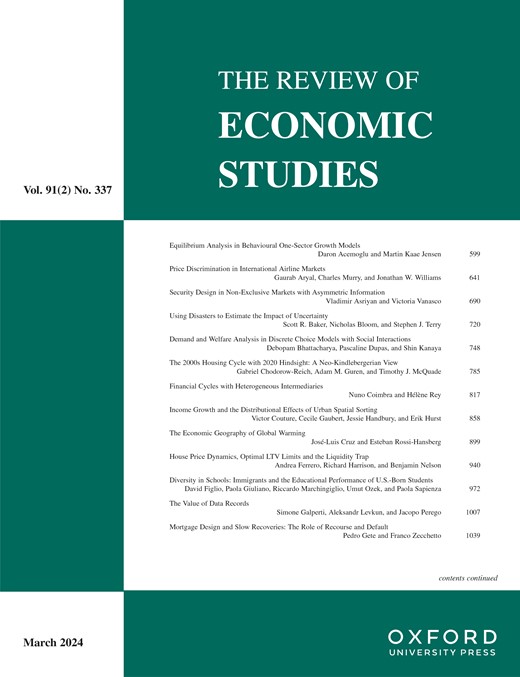
About the journal
The Review is essential reading for economists and has a reputation for publishing path-breaking papers in theoretical and applied economics.

Highly Cited Articles
The Review of Economic Studies remains a highly read and cited publication by researchers, as demonstrated by our latest Impact Factor. To celebrate this continued success, we have curated a free collection of the most cited papers published in recent years. Use this collection to support your current work, or get up to date with important discussions in the field of economics.
Read the papers
Why should you submit your paper to The Review of Economic Studies?
Watch this video now to find out more about the journal’s efficient, high-quality reviewing process from authors who have experienced it.

Celebrating Economics Impact Factors
Oxford University Press publishes a portfolio of high impact economics journals, as reflected by our leading Impact Factors in the field. Browse our range of economics titles, which publish contemporary research on a variety of topics, and find the research that best supports your work.

Explore past virtual issues from The Review of Economic Studies. With topics including:
- The Roots and Consequences of Conflicts
- Health and Economics
- 30 years of the REStud Tour
- International Trade
- Family Economics
Latest articles
From oupblog.

It’s cheaper to preserve the Amazon than we might think
"The cattle need ladders to graze here.” That is what my wife’s relatives used to tell her after they moved to the Amazon rainforest. She visited their farm when she was 13, and the planted grass was taller than she was. Grass grows tall there because of the substantial amount of nutrients left on the ground immediately after deforesting...
Read the blog post | Read the article

What America’s history of mass migration can teach us about attitudes to immigrants
International migration is one of the most pervasive social phenomena of our times. According to recent UN estimates, as of 2017, there were almost 260 million migrants around the world...
Read the blog post | Read the article

Out with the old?
Innovation is a primary driver of economic growth and of the rise in living standards, and a substantial body of research has been devoted to documenting the welfare benefits from it.

Climate and the inequality of nations
Countries grow richer as one moves away from the equator, and the same is generally true if one looks at differences among regions within countries. However, this was not always the case...
Summary Turnaround Statistics
The average turnaround time for a paper is 53 days.
Find out more about the journal's review speeds for first round submissions.
Excellence in Refereeing Prize 2022
The Review of Economic Studies would like to thank all of the exceptional reviewers who have contributed their time and expertise to the journal. The winners of the Excellence in Refereeing award have been announced.
Explore the full list
Why Publish in The Review of Economic Studies ?

Email alerts
Register to receive table of contents email alerts as soon as new issues of The Review of Economic Studies are published online.

JEL Codes Explained
Articles from Oxford Journals economics titles are classified according to the system used by the Journal of Economic Literature (commonly known as 'JEL codes').

Recommend to your library
Fill out our simple online form to recommend The Review of Economic Studies to your library.
Recommend now

Trending articles
Discover the top Review of Economic Studies articles sorted by Altmetric Score, mentioned online in the past three months.
Explore trending articles
Related Titles
- Recommend to your Library
- Journals Career Network
Affiliations
- Online ISSN 1467-937X
- Print ISSN 0034-6527
- Copyright © 2024 Review of Economic Studies Ltd
- About Oxford Academic
- Publish journals with us
- University press partners
- What we publish
- New features
- Open access
- Institutional account management
- Rights and permissions
- Get help with access
- Accessibility
- Advertising
- Media enquiries
- Oxford University Press
- Oxford Languages
- University of Oxford
Oxford University Press is a department of the University of Oxford. It furthers the University's objective of excellence in research, scholarship, and education by publishing worldwide
- Copyright © 2024 Oxford University Press
- Cookie settings
- Cookie policy
- Privacy policy
- Legal notice
This Feature Is Available To Subscribers Only
Sign In or Create an Account
This PDF is available to Subscribers Only
For full access to this pdf, sign in to an existing account, or purchase an annual subscription.

- {{subColumn.name}}
Data Science in Finance and Economics

- {{newsColumn.name}}
- Share facebook twitter google linkedin

Can we profit from BigTechs' time series models in predicting earnings per share? Evidence from Poland
- Wojciech Kuryłek ,
- Faculty of Management, University of Warsaw, 1/3 Szturmowa Street, 02-678 Warsaw, Poland
- Received: 03 January 2024 Revised: 01 March 2024 Accepted: 20 March 2024 Published: 15 April 2024
JEL Codes: C01, C02, C12, C14, C58, G17
- Full Text(HTML)
- Download PDF
Forecasting earnings for publicly traded companies is of paramount significance for investments, which is the background of this research. This holds particularly true in emerging markets where the coverage of these companies by financial analysts' predictions is limited. This research investigation delves into the prediction inaccuracies of cutting-edge time series forecasting algorithms created by major technology companies such as Facebook, LinkedIn, Amazon, and Google. These techniques are employed to analyze earnings per share data for publicly traded Polish companies during the period spanning from the financial crisis to the pandemic shock. My objective was to compare prediction errors of analyzed models, using scientifically defined error measures and a series of statistical tests. The seasonal random walk model demonstrated the lowest error of prediction, which might be attributable to the overfitting of complex models.
- earnings per share ,
- financial forecasting ,
- machine learning ,
- deep learning ,
- Prophet by Facebook ,
- SilverKite by LinkedIn ,
- DeepAR by Amazon ,
- TFT by Google ,
- Warsaw Stock Exchange
Citation: Wojciech Kuryłek. Can we profit from BigTechs' time series models in predicting earnings per share? Evidence from Poland[J]. Data Science in Finance and Economics, 2024, 4(2): 218-235. doi: 10.3934/DSFE.2024008
Related Papers:
- This work is licensed under a Creative Commons Attribution-NonCommercial-Share Alike 4.0 Unported License. To view a copy of this license, visit http://creativecommons.org/licenses/by-nc-sa/4.0/ -->
Supplements
Access history.
- Corresponding author: Email: [email protected]
Reader Comments
- © 2024 the Author(s), licensee AIMS Press. This is an open access article distributed under the terms of the Creative Commons Attribution License ( http://creativecommons.org/licenses/by/4.0 )
通讯作者: 陈斌, [email protected]
沈阳化工大学材料科学与工程学院 沈阳 110142

Article views( 30 ) PDF downloads( 2 ) Cited by( 0 )
Figures and Tables
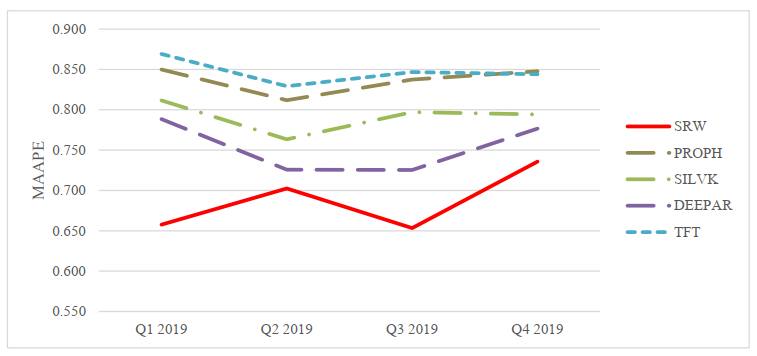
Figures( 1 ) / Tables( 8 )

Associated material
Other articles by authors.
- Wojciech Kuryłek
Related pages
- on Google Scholar
- Email to a friend
- Order reprints
Export File

- Figure 1. Mean arctangent absolute error of various models
Advertisement
Toward a framework for selecting indicators of measuring sustainability and circular economy in the agri-food sector: a systematic literature review
- LIFE CYCLE SUSTAINABILITY ASSESSMENT
- Published: 02 March 2022
Cite this article
- Cecilia Silvestri ORCID: orcid.org/0000-0003-2528-601X 1 ,
- Luca Silvestri ORCID: orcid.org/0000-0002-6754-899X 2 ,
- Michela Piccarozzi ORCID: orcid.org/0000-0001-9717-9462 1 &
- Alessandro Ruggieri 1
2866 Accesses
11 Citations
9 Altmetric
Explore all metrics
A Correction to this article was published on 24 March 2022
This article has been updated
The implementation of sustainability and circular economy (CE) models in agri-food production can promote resource efficiency, reduce environmental burdens, and ensure improved and socially responsible systems. In this context, indicators for the measurement of sustainability play a crucial role. Indicators can measure CE strategies aimed to preserve functions, products, components, materials, or embodied energy. Although there is broad literature describing sustainability and CE indicators, no study offers such a comprehensive framework of indicators for measuring sustainability and CE in the agri-food sector.
Starting from this central research gap, a systematic literature review has been developed to measure the sustainability in the agri-food sector and, based on these findings, to understand how indicators are used and for which specific purposes.
The analysis of the results allowed us to classify the sample of articles in three main clusters (“Assessment-LCA,” “Best practice,” and “Decision-making”) and has shown increasing attention to the three pillars of sustainability (triple bottom line). In this context, an integrated approach of indicators (environmental, social, and economic) offers the best solution to ensure an easier transition to sustainability.
Conclusions
The sample analysis facilitated the identification of new categories of impact that deserve attention, such as the cooperation among stakeholders in the supply chain and eco-innovation.
This is a preview of subscription content, log in via an institution to check access.
Access this article
Price includes VAT (Russian Federation)
Instant access to the full article PDF.
Rent this article via DeepDyve
Institutional subscriptions

Source: Authors’ elaboration. Notes: The graph shows the temporal distribution of the articles under analysis
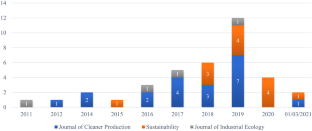
Source: Authors’ elaborations. Notes: The graph shows the time distribution of articles from the three major journals

Source: Authors’ elaboration. Notes: The graph shows the composition of the sample according to the three clusters identified by the analysis
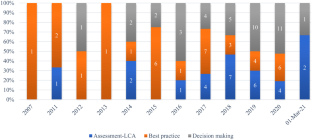
Source: Authors’ elaboration. Notes: The graph shows the distribution of articles over time by cluster
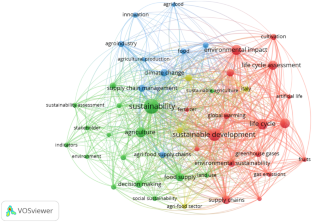
Source: Authors’ elaboration. Notes: The graph shows the network visualization
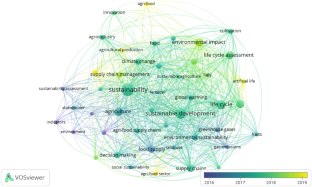
Source: Authors’ elaboration. Notes: The graph shows the overlay visualization
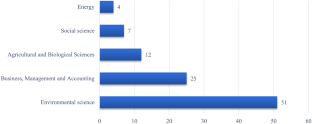
Source: Authors’ elaboration. Notes: The graph shows the classification of articles by scientific field
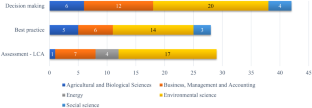
Source: Authors’ elaboration. Notes: Article classification based on their cluster to which they belong and scientific field

Source: Authors’ elaboration
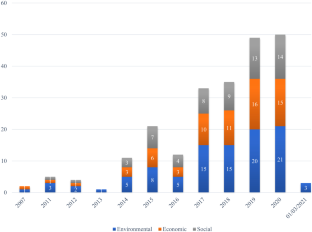
Source: Authors’ elaboration. Notes: The graph shows the distribution of items over time based on TBL
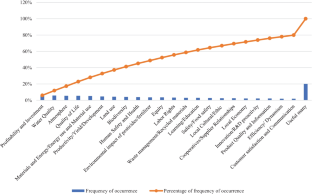
Source: Authors’ elaboration. Notes: The graph shows the Pareto diagram highlighting the most used indicators in literature for measuring sustainability in the agri-food sector
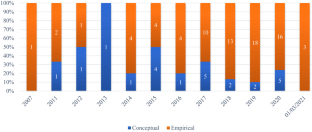
Source: Authors’ elaboration. Notes: The graph shows the distribution over time of articles divided into conceptual and empirical
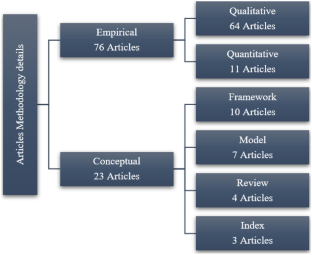
Source: Authors’ elaboration. Notes: The graph shows the classification of articles, divided into conceptual and empirical, in-depth analysis
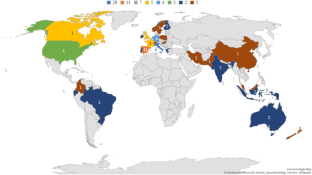
Source: Authors’ elaboration. Notes: The graph shows the geographical distribution of the authors
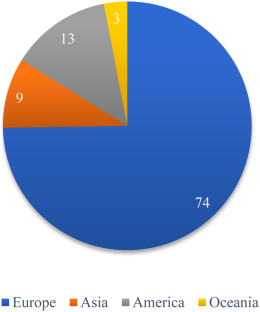
Source: Authors’ elaboration. Notes: The graph shows the distribution of authors according to the continent from which they originate
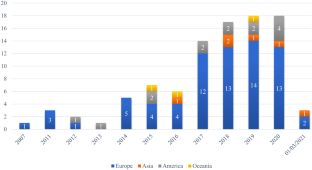
Source: Authors’ elaboration. Notes: The graph shows the time distribution of publication of authors according to the continent from which they originate
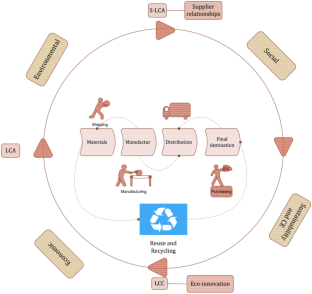
Source: Authors’ elaboration. Notes: Sustainability measurement indicators and impact categories of LCA, S-LCA, and LCC tools should be integrated in order to provide stakeholders with best practices as guidelines and tools to support both decision-making and measurement, according to the circular economy approach
Similar content being viewed by others

Common Methods and Sustainability Indicators

Transition heuristic frameworks in research on agro-food sustainability transitions
Hamid El Bilali
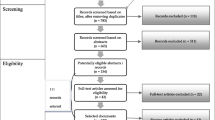
Research on agro-food sustainability transitions: where are food security and nutrition?
Change history, 24 march 2022.
A Correction to this paper has been published: https://doi.org/10.1007/s11367-022-02038-9
Acero AP, Rodriguez C, Ciroth A (2017) LCIA methods: impact assessment methods in life cycle assessment and their impact categories. Version 1.5.6. Green Delta 1–23
Accorsi R, Versari L, Manzini R (2015) Glass vs. plastic: Life cycle assessment of extra-virgin olive oil bottles across global supply chains. Sustain 7:2818–2840. https://doi.org/10.3390/su7032818
Adjei-Bamfo P, Maloreh-Nyamekye T, Ahenkan A (2019) The role of e-government in sustainable public procurement in developing countries: a systematic literature review. Resour Conserv Recycl 142:189–203. https://doi.org/10.1016/j.resconrec.2018.12.001
Article Google Scholar
Aivazidou E, Tsolakis N, Vlachos D, Iakovou E (2015) Water footprint management policies for agrifood supply chains: a critical taxonomy and a system dynamics modelling approach. Chem Eng Trans 43:115–120. https://doi.org/10.3303/CET1543020
Alhaddi H (2015) Triple bottom line and sustainability: a literature review. Bus Manag Stud 1:6–10
Allaoui H, Guo Y, Sarkis J (2019) Decision support for collaboration planning in sustainable supply chains. J Clean Prod 229:761–774. https://doi.org/10.1016/j.jclepro.2019.04.367
Alshqaqeeq F, Amin Esmaeili M, Overcash M, Twomey J (2020) Quantifying hospital services by carbon footprint: a systematic literature review of patient care alternatives. Resour Conserv Recycl 154:104560. https://doi.org/10.1016/j.resconrec.2019.104560
Anwar F, Chaudhry FN, Nazeer S et al (2016) Causes of ozone layer depletion and its effects on human: review. Atmos Clim Sci 06:129–134. https://doi.org/10.4236/acs.2016.61011
Aquilani B, Silvestri C, Ruggieri A (2016). A Systematic Literature Review on Total Quality Management Critical Success Factors and the Identification of New Avenues of Research. https://doi.org/10.1108/TQM-01-2016-0003
Aramyan L, Hoste R, Van Den Broek W et al (2011) Towards sustainable food production: a scenario study of the European pork sector. J Chain Netw Sci 11:177–189. https://doi.org/10.3920/JCNS2011.Qpork8
Arfini F, Antonioli F, Cozzi E et al (2019) Sustainability, innovation and rural development: the case of Parmigiano-Reggiano PDO. Sustain 11:1–17. https://doi.org/10.3390/su11184978
Assembly UG (2005) Resolution adopted by the general assembly. New York, NY
Avilés-Palacios C, Rodríguez-Olalla A (2021) The sustainability of waste management models in circular economies. Sustain 13:1–19. https://doi.org/10.3390/su13137105
Azevedo SG, Silva ME, Matias JCO, Dias GP (2018) The influence of collaboration initiatives on the sustainability of the cashew supply chain. Sustain 10:1–29. https://doi.org/10.3390/su10062075
Bajaj S, Garg R, Sethi M (2016) Total quality management: a critical literature review using Pareto analysis. Int J Product Perform Manag 67:128–154
Banasik A, Kanellopoulos A, Bloemhof-Ruwaard JM, Claassen GDH (2019) Accounting for uncertainty in eco-efficient agri-food supply chains: a case study for mushroom production planning. J Clean Prod 216:249–256. https://doi.org/10.1016/j.jclepro.2019.01.153
Barth H, Ulvenblad PO, Ulvenblad P (2017) Towards a conceptual framework of sustainable business model innovation in the agri-food sector: a systematic literature review. Sustain 9. https://doi.org/10.3390/su9091620
Bastas A, Liyanage K (2018) Sustainable supply chain quality management: a systematic review
Beckerman W (1992) Economic growth and the environment: whose growth? Whose environment? World Dev 20:481–496. https://doi.org/10.1016/0305-750X(92)90038-W
Belaud JP, Prioux N, Vialle C, Sablayrolles C (2019) Big data for agri-food 4.0: application to sustainability management for by-products supply chain. Comput Ind 111:41–50. https://doi.org/10.1016/j.compind.2019.06.006
Bele B, Norderhaug A, Sickel H (2018) Localized agri-food systems and biodiversity. Agric 8. https://doi.org/10.3390/agriculture8020022
Bilali H El, Calabrese G, Iannetta M et al (2020) Environmental sustainability of typical agro-food products: a scientifically sound and user friendly approach. New Medit 19:69–83. https://doi.org/10.30682/nm2002e
Blanc S, Massaglia S, Brun F et al (2019) Use of bio-based plastics in the fruit supply chain: an integrated approach to assess environmental, economic, and social sustainability. Sustain 11. https://doi.org/10.3390/su11092475
Bloemhof JM, van der Vorst JGAJ, Bastl M, Allaoui H (2015) Sustainability assessment of food chain logistics. Int J Logist Res Appl 18:101–117. https://doi.org/10.1080/13675567.2015.1015508
Bonisoli L, Galdeano-Gómez E, Piedra-Muñoz L (2018) Deconstructing criteria and assessment tools to build agri-sustainability indicators and support farmers’ decision-making process. J Clean Prod 182:1080–1094. https://doi.org/10.1016/j.jclepro.2018.02.055
Bonisoli L, Galdeano-Gómez E, Piedra-Muñoz L, Pérez-Mesa JC (2019) Benchmarking agri-food sustainability certifications: evidences from applying SAFA in the Ecuadorian banana agri-system. J Clean Prod 236. https://doi.org/10.1016/j.jclepro.2019.07.054
Bornmann L, Haunschild R, Hug SE (2018) Visualizing the context of citations referencing papers published by Eugene Garfield: a new type of keyword co-occurrence analysis. Scientometrics 114:427–437. https://doi.org/10.1007/s11192-017-2591-8
Boulding KE (1966) The economics of the coming spaceship earth. New York, 1-17
Bracquené E, Dewulf W, Duflou JR (2020) Measuring the performance of more circular complex product supply chains. Resour Conserv Recycl 154:104608. https://doi.org/10.1016/j.resconrec.2019.104608
Burck J, Hagen U, Bals C et al (2021) Climate Change Performance Index
Calisto Friant M, Vermeulen WJV, Salomone R (2020) A typology of circular economy discourses: navigating the diverse visions of a contested paradigm. Resour Conserv Recycl 161:104917. https://doi.org/10.1016/j.resconrec.2020.104917
Campbell BM, Beare DJ, Bennett EM et al (2017) Agriculture production as a major driver of the earth system exceeding planetary boundaries. Ecol Soc 22. https://doi.org/10.5751/ES-09595-220408
Capitanio F, Coppola A, Pascucci S (2010) Product and process innovation in the Italian food industry. Agribusiness 26:503–518. https://doi.org/10.1002/agr.20239
Caputo P, Zagarella F, Cusenza MA et al (2020) Energy-environmental assessment of the UIA-OpenAgri case study as urban regeneration project through agriculture. Sci Total Environ 729:138819. https://doi.org/10.1016/j.scitotenv.2020.138819
Article CAS Google Scholar
Chabowski BR, Mena JA, Gonzalez-Padron TL (2011) The structure of sustainability research in marketing, 1958–2008: a basis for future research opportunities. J Acad Mark Sci 39:55–70. https://doi.org/10.1007/s11747-010-0212-7
Chadegani AA, Salehi H, Yunus M et al (2017) A comparison between two main academic literature collections : Web of Science and Scopus databases. Asian Soc Sci 9:18–26. https://doi.org/10.5539/ass.v9n5p18
Chams N, Guesmi B, Gil JM (2020) Beyond scientific contribution: assessment of the societal impact of research and innovation to build a sustainable agri-food sector. J Environ Manage 264. https://doi.org/10.1016/j.jenvman.2020.110455
Chandrakumar C, McLaren SJ, Jayamaha NP, Ramilan T (2019) Absolute sustainability-based life cycle assessment (ASLCA): a benchmarking approach to operate agri-food systems within the 2°C global carbon budget. J Ind Ecol 23:906–917. https://doi.org/10.1111/jiec.12830
Chaparro-Africano AM (2019) Toward generating sustainability indicators for agroecological markets. Agroecol Sustain Food Syst 43:40–66. https://doi.org/10.1080/21683565.2019.1566192
Colicchia C, Strozzi F (2012) Supply chain risk management: a new methodology for a systematic literature review
Conca L, Manta F, Morrone D, Toma P (2021) The impact of direct environmental, social, and governance reporting: empirical evidence in European-listed companies in the agri-food sector. Bus Strateg Environ 30:1080–1093. https://doi.org/10.1002/bse.2672
Coppola A, Ianuario S, Romano S, Viccaro M (2020) Corporate social responsibility in agri-food firms: the relationship between CSR actions and firm’s performance. AIMS Environ Sci 7:542–558. https://doi.org/10.3934/environsci.2020034
Corona B, Shen L, Reike D et al (2019) Towards sustainable development through the circular economy—a review and critical assessment on current circularity metrics. Resour Conserv Recycl 151:104498. https://doi.org/10.1016/j.resconrec.2019.104498
Correia MS (2019) Sustainability: An overview of the triple bottom line and sustainability implementation. Int J Strateg Eng 2:29–38. https://doi.org/10.4018/IJoSE.2019010103
Coteur I, Marchand F, Debruyne L, Lauwers L (2019) Structuring the myriad of sustainability assessments in agri-food systems: a case in Flanders. J Clean Prod 209:472–480. https://doi.org/10.1016/j.jclepro.2018.10.066
CREA (2020) L’agricoltura italiana conta 2019
Crenna E, Sala S, Polce C, Collina E (2017) Pollinators in life cycle assessment: towards a framework for impact assessment. J Clean Prod 140:525–536. https://doi.org/10.1016/j.jclepro.2016.02.058
D’Eusanio M, Serreli M, Zamagni A, Petti L (2018) Assessment of social dimension of a jar of honey: a methodological outline. J Clean Prod 199:503–517. https://doi.org/10.1016/j.jclepro.2018.07.157
Dania WAP, Xing K, Amer Y (2018) Collaboration behavioural factors for sustainable agri-food supply chains: a systematic review. J Clean Prod 186:851–864
De Pascale A, Arbolino R, Szopik-Depczyńska K et al (2021) A systematic review for measuring circular economy: the 61 indicators. J Clean Prod 281. https://doi.org/10.1016/j.jclepro.2020.124942
De Schoenmakere M, Gillabel J (2017) Circular by design: products in the circular economy
Del Borghi A, Gallo M, Strazza C, Del Borghi M (2014) An evaluation of environmental sustainability in the food industry through life cycle assessment: the case study of tomato products supply chain. J Clean Prod 78:121–130. https://doi.org/10.1016/j.jclepro.2014.04.083
Del Borghi A, Strazza C, Magrassi F et al (2018) Life cycle assessment for eco-design of product–package systems in the food industry—the case of legumes. Sustain Prod Consum 13:24–36. https://doi.org/10.1016/j.spc.2017.11.001
Denyer D, Tranfield D (2009) Producing a systematic review. In: Buchanan B (ed) The sage handbook of organization research methods. Sage Publications Ltd, Cornwall, pp 671–689
Google Scholar
Dietz T, Grabs J, Chong AE (2019) Mainstreamed voluntary sustainability standards and their effectiveness: evidence from the Honduran coffee sector. Regul Gov. https://doi.org/10.1111/rego.12239
Dixon-Woods M (2011) Using framework-based synthesis for conducting reviews of qualitative studies. BMC Med 9:9–10. https://doi.org/10.1186/1741-7015-9-39
do Canto NR, Bossle MB, Marques L, Dutra M, (2020) Supply chain collaboration for sustainability: a qualitative investigation of food supply chains in Brazil. Manag Environ Qual an Int J. https://doi.org/10.1108/MEQ-12-2019-0275
dos Santos RR, Guarnieri P (2020) Social gains for artisanal agroindustrial producers induced by cooperation and collaboration in agri-food supply chain. Soc Responsib J. https://doi.org/10.1108/SRJ-09-2019-0323
Doukidis GI, Matopoulos A, Vlachopoulou M, Manthou V, Manos B (2007) A conceptual framework for supply chain collaboration: empirical evidence from the agri‐food industry. Supply Chain Manag an Int Journal 12:177–186. https://doi.org/10.1108/13598540710742491
Durach CF, Kembro J, Wieland A (2017) A new paradigm for systematic literature reviews in supply chain management. J Supply Chain Manag 53:67–85. https://doi.org/10.1111/jscm.12145
Durán-Sánchez A, Álvarez-García J, Río-Rama D, De la Cruz M (2018) Sustainable water resources management: a bibliometric overview. Water 10:1–19. https://doi.org/10.3390/w10091191
Duru M, Therond O (2015) Livestock system sustainability and resilience in intensive production zones: which form of ecological modernization? Reg Environ Chang 15:1651–1665. https://doi.org/10.1007/s10113-014-0722-9
Edison Fondazione (2019) Le eccellenze agricole italiane. I primati europei e mondiali dell’Italia nei prodotti vegetali. Milan (IT)
Ehrenfeld JR (2005) The roots of sustainability. MIT Sloan Manag Rev 46(2)46:23–25
Elia V, Gnoni MG, Tornese F (2017) Measuring circular economy strategies through index methods: a critical analysis. J Clean Prod 142:2741–2751. https://doi.org/10.1016/j.jclepro.2016.10.196
Elkington J (1997) Cannibals with forks : the triple bottom line of 21st century business. Capstone, Oxford
Esposito B, Sessa MR, Sica D, Malandrino O (2020) Towards circular economy in the agri-food sector. A systematic literature review. Sustain 12. https://doi.org/10.3390/SU12187401
European Commission (2018) Agri-food trade in 2018
European Commission (2019) Monitoring EU agri-food trade: development until September 2019
Eurostat (2018) Small and large farms in the EU - statistics from the farm structure survey
FAO (2011) Biodiversity for food and agriculture. Italy, Rome
FAO (2012) Energy-smart food at FAO: an overview. Italy, Rome
FAO (2014) Food wastage footprint: fool cost-accounting
FAO (2016) The state of food and agriculture climate change, agriculture and food security. Italy, Rome
FAO (2017) The future of food and agriculture: trends and challenges. Italy, Rome
FAO (2020) The state of food security and nutrition in the world. Transforming Food Systems for Affordable Healthy Diets. Rome, Italy
Fassio F, Tecco N (2019) Circular economy for food: a systemic interpretation of 40 case histories in the food system in their relationships with SDGs. Systems 7:43. https://doi.org/10.3390/systems7030043
Fathollahi A, Coupe SJ (2021) Life cycle assessment (LCA) and life cycle costing (LCC) of road drainage systems for sustainability evaluation: quantifying the contribution of different life cycle phases. Sci Total Environ 776:145937. https://doi.org/10.1016/j.scitotenv.2021.145937
Ferreira VJ, Arnal ÁJ, Royo P et al (2019) Energy and resource efficiency of electroporation-assisted extraction as an emerging technology towards a sustainable bio-economy in the agri-food sector. J Clean Prod 233:1123–1132. https://doi.org/10.1016/j.jclepro.2019.06.030
Fiksel J (2006) A framework for sustainable remediation. JOM 8:15–22. https://doi.org/10.1021/es202595w
Flick U (2014) An introduction to qualitative research
Franciosi C, Voisin A, Miranda S et al (2020) Measuring maintenance impacts on sustainability of manufacturing industries : from a systematic literature review to a framework proposal. J Clean Prod 260:1–19. https://doi.org/10.1016/j.jclepro.2020.121065
Gaitán-Cremaschi D, Meuwissen MPM, Oude AGJML (2017) Total factor productivity: a framework for measuring agri-food supply chain performance towards sustainability. Appl Econ Perspect Policy 39:259–285. https://doi.org/10.1093/aepp/ppw008
Galdeano-Gómez E, Zepeda-Zepeda JA, Piedra-Muñoz L, Vega-López LL (2017) Family farm’s features influencing socio-economic sustainability: an analysis of the agri-food sector in southeast Spain. New Medit 16:50–61
Gallopín G, Herrero LMJ, Rocuts A (2014) Conceptual frameworks and visual interpretations of sustainability. Int J Sustain Dev 17:298–326. https://doi.org/10.1504/IJSD.2014.064183
Gallopín GC (2003) Sostenibilidad y desarrollo sostenible: un enfoque sistémico. Cepal, LATIN AMERICA
Garnett T (2013) Food sustainability: problems, perspectives and solutions. Proc Nutr Soc 72:29–39. https://doi.org/10.1017/S0029665112002947
Garofalo P, D’Andrea L, Tomaiuolo M et al (2017) Environmental sustainability of agri-food supply chains in Italy: the case of the whole-peeled tomato production under life cycle assessment methodology. J Food Eng 200:1–12. https://doi.org/10.1016/j.jfoodeng.2016.12.007
Gava O, Bartolini F, Venturi F et al (2018) A reflection of the use of the life cycle assessment tool for agri-food sustainability. Sustain 11. https://doi.org/10.3390/su11010071
Gazzola P, Querci E (2017) The connection between the quality of life and sustainable ecological development. Eur Sci J 7881:1857–7431
Geissdoerfer M, Savaget P, Bocken N, Hultink EJ (2017) The circular economy – a new sustainability paradigm ? The circular economy – a new sustainability paradigm ? J Clean Prod 143:757–768. https://doi.org/10.1016/j.jclepro.2016.12.048
Georgescu-Roegen N (1971) The entropy low and the economic process. Harward University Press, Cambridge Mass
Book Google Scholar
Gerbens-Leenes PW, Moll HC, Schoot Uiterkamp AJM (2003) Design and development of a measuring method for environmental sustainability in food production systems. Ecol Econ 46:231–248. https://doi.org/10.1016/S0921-8009(03)00140-X
Gésan-Guiziou G, Alaphilippe A, Aubin J et al (2020) Diversity and potentiality of multi-criteria decision analysis methods for agri-food research. Agron Sustain Dev 40. https://doi.org/10.1007/s13593-020-00650-3
Ghisellini P, Cialani C, Ulgiati S (2016) A review on circular economy: the expected transition to a balanced interplay of environmental and economic systems. J Clean Prod 114:11–32. https://doi.org/10.1016/j.jclepro.2015.09.007
Godoy-Durán Á, Galdeano- Gómez E, Pérez-Mesa JC, Piedra-Muñoz L (2017) Assessing eco-efficiency and the determinants of horticultural family-farming in southeast Spain. J Environ Manage 204:594–604. https://doi.org/10.1016/j.jenvman.2017.09.037
Gold S, Kunz N, Reiner G (2017) Sustainable global agrifood supply chains: exploring the barriers. J Ind Ecol 21:249–260. https://doi.org/10.1111/jiec.12440
Goucher L, Bruce R, Cameron DD et al (2017) The environmental impact of fertilizer embodied in a wheat-to-bread supply chain. Nat Plants 3:1–5. https://doi.org/10.1038/nplants.2017.12
Green A, Nemecek T, Chaudhary A, Mathys A (2020) Assessing nutritional, health, and environmental sustainability dimensions of agri-food production. Glob Food Sec 26:100406. https://doi.org/10.1016/j.gfs.2020.100406
Guinée JB, Heijungs R, Huppes G et al (2011) Life cycle assessment: past, present, and future †. Environ Sci Technol 45:90–96. https://doi.org/10.1021/es101316v
Guiomar N, Godinho S, Pinto-Correia T et al (2018) Typology and distribution of small farms in Europe: towards a better picture. Land Use Policy 75:784–798. https://doi.org/10.1016/j.landusepol.2018.04.012
Gunasekaran A, Patel C, McGaughey RE (2004) A framework for supply chain performance measurement. Int J Prod Econ 87:333–347. https://doi.org/10.1016/j.ijpe.2003.08.003
Gunasekaran A, Patel C, Tirtiroglu E (2001) Performance measures and metrics in a supply chain environment. Int J Oper Prod Manag 21:71–87. https://doi.org/10.1108/01443570110358468
Hamam M, Chinnici G, Di Vita G et al (2021) Circular economy models in agro-food systems: a review. Sustain 13
Harun SN, Hanafiah MM, Aziz NIHA (2021) An LCA-based environmental performance of rice production for developing a sustainable agri-food system in Malaysia. Environ Manage 67:146–161. https://doi.org/10.1007/s00267-020-01365-7
Harvey M, Pilgrim S (2011) The new competition for land: food, energy, and climate change. Food Policy 36:S40–S51. https://doi.org/10.1016/j.foodpol.2010.11.009
Hawkes C, Ruel MT (2006) Understanding the links between agriculture and health. DC: International Food Policy Research Institute. Washington, USA
Hellweg S, Milà i Canals L (2014) Emerging approaches, challenges and opportunities in life cycle assessment. Science (80)344:1109LP–1113. https://doi.org/10.1126/science.1248361
Higgins V, Dibden J, Cocklin C (2015) Private agri-food governance and greenhouse gas abatement: constructing a corporate carbon economy. Geoforum 66:75–84. https://doi.org/10.1016/j.geoforum.2015.09.012
Hill T (1995) Manufacturing strategy: text and cases., Macmillan
Hjeresen DD, Gonzales R (2020) Green chemistry promote sustainable agriculture?The rewards are higher yields and less environmental contamination. Environemental Sci Techonology 103–107
Horne R, Grant T, Verghese K (2009) Life cycle assessment: principles, practice, and prospects. Csiro Publishing, Collingwood, Australia
Horton P, Koh L, Guang VS (2016) An integrated theoretical framework to enhance resource efficiency, sustainability and human health in agri-food systems. J Clean Prod 120:164–169. https://doi.org/10.1016/j.jclepro.2015.08.092
Hospido A, Davis J, Berlin J, Sonesson U (2010) A review of methodological issues affecting LCA of novel food products. Int J Life Cycle Assess 15:44–52. https://doi.org/10.1007/s11367-009-0130-4
Huffman T, Liu J, Green M et al (2015) Improving and evaluating the soil cover indicator for agricultural land in Canada. Ecol Indic 48:272–281. https://doi.org/10.1016/j.ecolind.2014.07.008
Ilbery B, Maye D (2005) Food supply chains and sustainability: evidence from specialist food producers in the Scottish/English borders. Land Use Policy 22:331–344. https://doi.org/10.1016/j.landusepol.2004.06.002
Ingrao C, Faccilongo N, Valenti F et al (2019) Tomato puree in the Mediterranean region: an environmental life cycle assessment, based upon data surveyed at the supply chain level. J Clean Prod 233:292–313. https://doi.org/10.1016/j.jclepro.2019.06.056
Iocola I, Angevin F, Bockstaller C et al (2020) An actor-oriented multi-criteria assessment framework to support a transition towards sustainable agricultural systems based on crop diversification. Sustain 12. https://doi.org/10.3390/su12135434
Irabien A, Darton RC (2016) Energy–water–food nexus in the Spanish greenhouse tomato production. Clean Technol Environ Policy 18:1307–1316. https://doi.org/10.1007/s10098-015-1076-9
ISO 14040:2006 (2006) Environmental management — life cycle assessment — principles and framework
ISO 14044:2006 (2006) Environmental management — life cycle assessment — requirements and guidelines
ISO 15392:2008 (2008) Sustainability in building construction–general principles
Istat (2019) Andamento dell’economia agricola
Jaakkola E (2020) Designing conceptual articles : four approaches. AMS Rev 1–9. https://doi.org/10.1007/s13162-020-00161-0
Jin R, Yuan H, Chen Q (2019) Science mapping approach to assisting the review of construction and demolition waste management research published between 2009 and 2018. Resour Conserv Recycl 140:175–188. https://doi.org/10.1016/j.resconrec.2018.09.029
Johnston P, Everard M, Santillo D, Robèrt KH (2007) Reclaiming the definition of sustainability. Environ Sci Pollut Res Int 14:60–66. https://doi.org/10.1065/espr2007.01.375
Jorgensen SE, Burkhard B, Müller F (2013) Twenty volumes of ecological indicators-an accounting short review. Ecol Indic 28:4–9. https://doi.org/10.1016/j.ecolind.2012.12.018
Joshi S, Sharma M, Kler R (2020) Modeling circular economy dimensions in agri-tourism clusters: sustainable performance and future research directions. Int J Math Eng Manag Sci 5:1046–1061. https://doi.org/10.33889/IJMEMS.2020.5.6.080
Kamilaris A, Gao F, Prenafeta-Boldu FX, Ali MI (2017) Agri-IoT: a semantic framework for Internet of Things-enabled smart farming applications. In: 2016 IEEE 3rd World Forum on Internet of Things, WF-IoT 2016. pp 442–447
Karuppusami G, Gandhinathan R (2006) Pareto analysis of critical success factors of total quality management: a literature review and analysis. TQM Mag 18:372–385. https://doi.org/10.1108/09544780610671048
Kates RW, Parris TM, Leiserowitz AA (2005) What is sustainable development? Goals, indicators, values, and practice. Environ Sci Policy Sustain Dev 47:8–21. https://doi.org/10.1080/00139157.2005.10524444
Khounani Z, Hosseinzadeh-Bandbafha H, Moustakas K et al (2021) Environmental life cycle assessment of different biorefinery platforms valorizing olive wastes to biofuel, phosphate salts, natural antioxidant, and an oxygenated fuel additive (triacetin). J Clean Prod 278:123916. https://doi.org/10.1016/j.jclepro.2020.123916
Kitchenham B, Charters S (2007) Guidelines for performing systematic literature reviews in software engineering version 2.3. Engineering 45. https://doi.org/10.1145/1134285.1134500
Korhonen J, Nuur C, Feldmann A, Birkie SE (2018) Circular economy as an essentially contested concept. J Clean Prod 175:544–552. https://doi.org/10.1016/j.jclepro.2017.12.111
Kuisma M, Kahiluoto H (2017) Biotic resource loss beyond food waste: agriculture leaks worst. Resour Conserv Recycl 124:129–140. https://doi.org/10.1016/j.resconrec.2017.04.008
Laso J, Hoehn D, Margallo M et al (2018) Assessing energy and environmental efficiency of the Spanish agri-food system using the LCA/DEA methodology. Energies 11. https://doi.org/10.3390/en11123395
Lee KM (2007) So What is the “triple bottom line”? Int J Divers Organ Communities Nations Annu Rev 6:67–72. https://doi.org/10.18848/1447-9532/cgp/v06i06/39283
Lehmann RJ, Hermansen JE, Fritz M et al (2011) Information services for European pork chains - closing gaps in information infrastructures. Comput Electron Agric 79:125–136. https://doi.org/10.1016/j.compag.2011.09.002
León-Bravo V, Caniato F, Caridi M, Johnsen T (2017) Collaboration for sustainability in the food supply chain: a multi-stage study in Italy. Sustainability 9:1253
Lepage A (2009) The quality of life as attribute of sustainability. TQM J 21:105–115. https://doi.org/10.1108/17542730910938119
Li CZ, Zhao Y, Xiao B et al (2020) Research trend of the application of information technologies in construction and demolition waste management. J Clean Prod 263. https://doi.org/10.1016/j.jclepro.2020.121458
Lo Giudice A, Mbohwa C, Clasadonte MT, Ingrao C (2014) Life cycle assessment interpretation and improvement of the Sicilian artichokes production. Int J Environ Res 8:305–316. https://doi.org/10.22059/ijer.2014.721
Lueddeckens S, Saling P, Guenther E (2020) Temporal issues in life cycle assessment—a systematic review. Int J Life Cycle Assess 25:1385–1401. https://doi.org/10.1007/s11367-020-01757-1
Luo J, Ji C, Qiu C, Jia F (2018) Agri-food supply chain management: bibliometric and content analyses. Sustain 10. https://doi.org/10.3390/su10051573
Lynch J, Donnellan T, Finn JA et al (2019) Potential development of Irish agricultural sustainability indicators for current and future policy evaluation needs. J Environ Manage 230:434–445. https://doi.org/10.1016/j.jenvman.2018.09.070
MacArthur E (2013) Towards the circular economy. J Ind Ecol 2:23–44
MacArthur E (2017) Delivering the circular economy a toolkit for policymakers, The Ellen MacArthur Foundation
MacInnis DJ (2011) A framework for conceptual. J Mark 75:136–154. https://doi.org/10.1509/jmkg.75.4.136
Mangla SK, Luthra S, Rich N et al (2018) Enablers to implement sustainable initiatives in agri-food supply chains. Int J Prod Econ 203:379–393. https://doi.org/10.1016/j.ijpe.2018.07.012
Marotta G, Nazzaro C, Stanco M (2017) How the social responsibility creates value: models of innovation in Italian pasta industry. Int J Glob Small Bus 9:144–167. https://doi.org/10.1504/IJGSB.2017.088923
Martucci O, Arcese G, Montauti C, Acampora A (2019) Social aspects in the wine sector: comparison between social life cycle assessment and VIVA sustainable wine project indicators. Resources 8. https://doi.org/10.3390/resources8020069
Mayring P (2004) Forum : Qualitative social research Sozialforschung 2. History of content analysis. A Companion to Qual Res 1:159–176
McKelvey B (2002) Managing coevolutionary dynamics. In: 18th EGOS Conference. Barcelona, Spain, pp 1–21
McMichael AJ, Butler CD, Folke C (2003) New visions for addressing sustainability. Science (80- ) 302:1191–1920
Mehmood A, Ahmed S, Viza E et al (2021) Drivers and barriers towards circular economy in agri-food supply chain: a review. Bus Strateg Dev 1–17. https://doi.org/10.1002/bsd2.171
Mella P, Gazzola P (2011) Sustainability and quality of life: the development model. In: Kapounek S (ed) Enterprise and competitive environment. Mendel University: Brno, Czechia. 542–551
Merli R, Preziosi M, Acampora A (2018) How do scholars approach the circular economy ? A systematic literature review. J Clean Prod 178:703–722. https://doi.org/10.1016/j.jclepro.2017.12.112
Merli R, Preziosi M, Acampora A et al (2020) Recycled fibers in reinforced concrete: a systematic literature review. J Clean Prod 248:119207. https://doi.org/10.1016/j.jclepro.2019.119207
Miglietta PP, Morrone D (2018) Managing water sustainability: virtual water flows and economic water productivity assessment of the wine trade between Italy and the Balkans. Sustain 10. https://doi.org/10.3390/su10020543
Mitchell MGE, Chan KMA, Newlands NK, Ramankutty N (2020) Spatial correlations don’t predict changes in agricultural ecosystem services: a Canada-wide case study. Front Sustain Food Syst 4:1–17. https://doi.org/10.3389/fsufs.2020.539892
Moraga G, Huysveld S, Mathieux F et al (2019) Circular economy indicators: what do they measure?. Resour Conserv Recycl 146:452–461. https://doi.org/10.1016/j.resconrec.2019.03.045
Morrissey JE, Dunphy NP (2015) Towards sustainable agri-food systems: the role of integrated sustainability and value assessment across the supply-chain. Int J Soc Ecol Sustain Dev 6:41–58. https://doi.org/10.4018/IJSESD.2015070104
Moser G (2009) Quality of life and sustainability: toward person-environment congruity. J Environ Psychol 29:351–357. https://doi.org/10.1016/j.jenvp.2009.02.002
Muijs D (2010) Doing quantitative research in education with SPSS. London
Muller MF, Esmanioto F, Huber N, Loures ER (2019) A systematic literature review of interoperability in the green Building Information Modeling lifecycle. J Clean Prod 223:397–412. https://doi.org/10.1016/j.jclepro.2019.03.114
Muradin M, Joachimiak-Lechman K, Foltynowicz Z (2018) Evaluation of eco-efficiency of two alternative agricultural biogas plants. Appl Sci 8. https://doi.org/10.3390/app8112083
Naseer MA, ur R, Ashfaq M, Hassan S, et al (2019) Critical issues at the upstream level in sustainable supply chain management of agri-food industries: evidence from Pakistan’s citrus industry. Sustain 11:1–19. https://doi.org/10.3390/su11051326
Nattassha R, Handayati Y, Simatupang TM, Siallagan M (2020) Understanding circular economy implementation in the agri-food supply chain: the case of an Indonesian organic fertiliser producer. Agric Food Secur 9:1–16. https://doi.org/10.1186/s40066-020-00264-8
Nazari-Sharabian M, Ahmad S, Karakouzian M (2018) Climate change and eutrophication: a short review. Eng Technol Appl Sci Res 8:3668–3672. https://doi.org/10.5281/zenodo.2532694
Nazir N (2017) Understanding life cycle thinking and its practical application to agri-food system. Int J Adv Sci Eng Inf Technol 7:1861–1870. https://doi.org/10.18517/ijaseit.7.5.3578
Negra C, Remans R, Attwood S et al (2020) Sustainable agri-food investments require multi-sector co-development of decision tools. Ecol Indic 110:105851. https://doi.org/10.1016/j.ecolind.2019.105851
Newsham KK, Robinson SA (2009) Responses of plants in polar regions to UVB exposure: a meta-analysis. Glob Chang Biol 15:2574–2589. https://doi.org/10.1111/j.1365-2486.2009.01944.x
Niemeijer D, de Groot RS (2008) A conceptual framework for selecting environmental indicator sets. Ecol Indic 8:14–25. https://doi.org/10.1016/j.ecolind.2006.11.012
Niero M, Kalbar PP (2019) Coupling material circularity indicators and life cycle based indicators: a proposal to advance the assessment of circular economy strategies at the product level. Resour Conserv Recycl 140:305–312. https://doi.org/10.1016/j.resconrec.2018.10.002
Nikolaou IE, Tsagarakis KP (2021) An introduction to circular economy and sustainability: some existing lessons and future directions. Sustain Prod Consum 28:600–609. https://doi.org/10.1016/j.spc.2021.06.017
Notarnicola B, Hayashi K, Curran MA, Huisingh D (2012) Progress in working towards a more sustainable agri-food industry. J Clean Prod 28:1–8. https://doi.org/10.1016/j.jclepro.2012.02.007
Notarnicola B, Tassielli G, Renzulli PA, Monforti F (2017) Energy flows and greenhouses gases of EU (European Union) national breads using an LCA (life cycle assessment) approach. J Clean Prod 140:455–469. https://doi.org/10.1016/j.jclepro.2016.05.150
Opferkuch K, Caeiro S, Salomone R, Ramos TB (2021) Circular economy in corporate sustainability reporting: a review of organisational approaches. Bus Strateg Environ 1–22. https://doi.org/10.1002/bse.2854
Padilla-Rivera A, do Carmo BBT, Arcese G, Merveille N, (2021) Social circular economy indicators: selection through fuzzy delphi method. Sustain Prod Consum 26:101–110. https://doi.org/10.1016/j.spc.2020.09.015
Pagotto M, Halog A (2016) Towards a circular economy in Australian agri-food industry: an application of input-output oriented approaches for analyzing resource efficiency and competitiveness potential. J Ind Ecol 20:1176–1186. https://doi.org/10.1111/jiec.12373
Parent G, Lavallée S (2011) LCA potentials and limits within a sustainable agri-food statutory framework. Global food insecurity. Springer, Netherlands, Dordrecht, pp 161–171
Chapter Google Scholar
Pattey E, Qiu G (2012) Trends in primary particulate matter emissions from Canadian agriculture. J Air Waste Manag Assoc 62:737–747. https://doi.org/10.1080/10962247.2012.672058
Pauliuk S (2018) Critical appraisal of the circular economy standard BS 8001:2017 and a dashboard of quantitative system indicators for its implementation in organizations. Resour Conserv Recycl 129:81–92. https://doi.org/10.1016/j.resconrec.2017.10.019
Peano C, Migliorini P, Sottile F (2014) A methodology for the sustainability assessment of agri-food systems: an application to the slow food presidia project. Ecol Soc 19. https://doi.org/10.5751/ES-06972-190424
Peano C, Tecco N, Dansero E et al (2015) Evaluating the sustainability in complex agri-food systems: the SAEMETH framework. Sustain 7:6721–6741. https://doi.org/10.3390/su7066721
Pearce DW, Turner RK (1990) Economics of natural resources and the environment. Harvester Wheatsheaf, Hemel Hempstead, Herts
Pelletier N (2018) Social sustainability assessment of Canadian egg production facilities: methods, analysis, and recommendations. Sustain 10:1–17. https://doi.org/10.3390/su10051601
Peña C, Civit B, Gallego-Schmid A et al (2021) Using life cycle assessment to achieve a circular economy. Int J Life Cycle Assess 26:215–220. https://doi.org/10.1007/s11367-020-01856-z
Perez Neira D (2016) Energy sustainability of Ecuadorian cacao export and its contribution to climate change. A case study through product life cycle assessment. J Clean Prod 112:2560–2568. https://doi.org/10.1016/j.jclepro.2015.11.003
Pérez-Neira D, Grollmus-Venegas A (2018) Life-cycle energy assessment and carbon footprint of peri-urban horticulture. A comparative case study of local food systems in Spain. Landsc Urban Plan 172:60–68. https://doi.org/10.1016/j.landurbplan.2018.01.001
Pérez-Pons ME, Plaza-Hernández M, Alonso RS et al (2021) Increasing profitability and monitoring environmental performance: a case study in the agri-food industry through an edge-iot platform. Sustain 13:1–16. https://doi.org/10.3390/su13010283
Petti L, Serreli M, Di Cesare S (2018) Systematic literature review in social life cycle assessment. Int J Life Cycle Assess 23:422–431. https://doi.org/10.1007/s11367-016-1135-4
Pieroni MPP, McAloone TC, Pigosso DCA (2019) Business model innovation for circular economy and sustainability: a review of approaches. J Clean Prod 215:198–216. https://doi.org/10.1016/j.jclepro.2019.01.036
Polit DF, Beck CT (2004) Nursing research: principles and methods. Lippincott Williams & Wilkins, Philadelphia, PA
Porkka M, Gerten D, Schaphoff S et al (2016) Causes and trends of water scarcity in food production. Environ Res Lett 11:015001. https://doi.org/10.1088/1748-9326/11/1/015001
Prajapati H, Kant R, Shankar R (2019) Bequeath life to death: state-of-art review on reverse logistics. J Clean Prod 211:503–520. https://doi.org/10.1016/j.jclepro.2018.11.187
Priyadarshini P, Abhilash PC (2020) Policy recommendations for enabling transition towards sustainable agriculture in India. Land Use Policy 96:104718. https://doi.org/10.1016/j.landusepol.2020.104718
Pronti A, Coccia M (2020) Multicriteria analysis of the sustainability performance between agroecological and conventional coffee farms in the East Region of Minas Gerais (Brazil). Renew Agric Food Syst. https://doi.org/10.1017/S1742170520000332
Rabadán A, González-Moreno A, Sáez-Martínez FJ (2019) Improving firms’ performance and sustainability: the case of eco-innovation in the agri-food industry. Sustain 11. https://doi.org/10.3390/su11205590
Raut RD, Luthra S, Narkhede BE et al (2019) Examining the performance oriented indicators for implementing green management practices in the Indian agro sector. J Clean Prod 215:926–943. https://doi.org/10.1016/j.jclepro.2019.01.139
Recanati F, Marveggio D, Dotelli G (2018) From beans to bar: a life cycle assessment towards sustainable chocolate supply chain. Sci Total Environ 613–614:1013–1023. https://doi.org/10.1016/j.scitotenv.2017.09.187
Redclift M (2005) Sustainable development (1987–2005): an oxymoron comes of age. Sustain Dev 13:212–227. https://doi.org/10.1002/sd.281
Rezaei M, Soheilifard F, Keshvari A (2021) Impact of agrochemical emission models on the environmental assessment of paddy rice production using life cycle assessment approach. Energy Sources. Part A Recover Util Environ Eff 1–16
Rigamonti L, Mancini E (2021) Life cycle assessment and circularity indicators. Int J Life Cycle Assess. https://doi.org/10.1007/s11367-021-01966-2
Risku-Norja H, Mäenpää I (2007) MFA model to assess economic and environmental consequences of food production and consumption. Ecol Econ 60:700–711. https://doi.org/10.1016/j.ecolecon.2006.05.001
Ritzén S, Sandström GÖ (2017) Barriers to the circular economy – integration of perspectives and domains. Procedia CIRP 64:7–12. https://doi.org/10.1016/j.procir.2017.03.005
Rockström J, Steffen W, Noone K et al (2009) A safe operating space for humanity. Nature 461:472–475. https://doi.org/10.1038/461472a
Roos Lindgreen E, Mondello G, Salomone R et al (2021) Exploring the effectiveness of grey literature indicators and life cycle assessment in assessing circular economy at the micro level: a comparative analysis. Int J Life Cycle Assess. https://doi.org/10.1007/s11367-021-01972-4
Roselli L, Casieri A, De Gennaro BC et al (2020) Environmental and economic sustainability of table grape production in Italy. Sustain 12. https://doi.org/10.3390/su12093670
Ross RB, Pandey V, Ross KL (2015) Sustainability and strategy in U.S. agri-food firms: an assessment of current practices. Int Food Agribus Manag Rev 18:17–48
Royo P, Ferreira VJ, López-Sabirón AM, Ferreira G. (2016) Hybrid diagnosis to characterise the energy and environmental enhancement of photovoltaic modules using smart materials. Energy 101:174–189. https://doi.org/10.1016/j.energy.2016.01.101
Ruggerio CA (2021) Sustainability and sustainable development: a review of principles and definitions. Sci Total Environ 786:147481. https://doi.org/10.1016/j.scitotenv.2021.147481
Ruiz-Almeida A, Rivera-Ferre MG (2019) Internationally-based indicators to measure agri-food systems sustainability using food sovereignty as a conceptual framework. Food Secur 11:1321–1337. https://doi.org/10.1007/s12571-019-00964-5
Ryan M, Hennessy T, Buckley C et al (2016) Developing farm-level sustainability indicators for Ireland using the Teagasc National Farm Survey. Irish J Agric Food Res 55:112–125. https://doi.org/10.1515/ijafr-2016-0011
Saade MRM, Yahia A, Amor B (2020) How has LCA been applied to 3D printing ? A systematic literature review and recommendations for future studies. J Clean Prod 244:118803. https://doi.org/10.1016/j.jclepro.2019.118803
Saitone TL, Sexton RJ (2017) Agri-food supply chain: evolution and performance with conflicting consumer and societal demands. Eur Rev Agric Econ 44:634–657. https://doi.org/10.1093/erae/jbx003
Salim N, Ab Rahman MN, Abd Wahab D (2019) A systematic literature review of internal capabilities for enhancing eco-innovation performance of manufacturing firms. J Clean Prod 209:1445–1460. https://doi.org/10.1016/j.jclepro.2018.11.105
Salimi N (2021) Circular economy in agri-food systems BT - strategic decision making for sustainable management of industrial networks. In: International S (ed) Rezaei J. Publishing, Cham, pp 57–70
Salomone R, Ioppolo G (2012) Environmental impacts of olive oil production: a life cycle assessment case study in the province of Messina (Sicily). J Clean Prod 28:88–100. https://doi.org/10.1016/j.jclepro.2011.10.004
Sánchez AD, Río DMDLC, García JÁ (2017) Bibliometric analysis of publications on wine tourism in the databases Scopus and WoS. Eur Res Manag Bus Econ 23:8–15. https://doi.org/10.1016/j.iedeen.2016.02.001
Saputri VHL, Sutopo W, Hisjam M, Ma’aram A (2019) Sustainable agri-food supply chain performance measurement model for GMO and non-GMO using data envelopment analysis method. Appl Sci 9. https://doi.org/10.3390/app9061199
Sassanelli C, Rosa P, Rocca R, Terzi S (2019) Circular economy performance assessment methods : a systematic literature review. J Clean Prod 229:440–453. https://doi.org/10.1016/j.jclepro.2019.05.019
Schiefer S, Gonzalez C, Flanigan S (2015) More than just a factor in transition processes? The role of collaboration in agriculture. In: Sutherland LA, Darnhofer I, Wilson GA, Zagata L (eds) Transition pathways towards sustainability in agriculture: case studies from Europe, CPI Group. Croydon, UK, pp. 83
Seuring S, Muller M (2008) From a literature review to a conceptual framework for sustainable supply chain management. J Clean Prod 16:1699–1710. https://doi.org/10.1016/j.jclepro.2008.04.020
Silvestri C, Silvestri L, Forcina A, et al (2021) Green chemistry contribution towards more equitable global sustainability and greater circular economy: A systematic literature review. J Clean Prod 294. https://doi.org/10.1016/j.jclepro.2021.126137
Smetana S, Schmitt E, Mathys A (2019) Sustainable use of Hermetia illucens insect biomass for feed and food: attributional and consequential life cycle assessment. Resour Conserv Recycl 144:285–296. https://doi.org/10.1016/j.resconrec.2019.01.042
Sonesson U, Berlin J, Ziegler F (2010) Environmental assessment and management in the food industry: life cycle assessment and related approaches. Woodhead Publishing, Cambridge
Soussana JF (2014) Research priorities for sustainable agri-food systems and life cycle assessment. J Clean Prod 73:19–23. https://doi.org/10.1016/j.jclepro.2014.02.061
Soylu A, Oruç C, Turkay M et al (2006) Synergy analysis of collaborative supply chain management in energy systems using multi-period MILP. Eur J Oper Res 174:387–403. https://doi.org/10.1016/j.ejor.2005.02.042
Spaiser V, Ranganathan S, Swain RB, Sumpter DJ (2017) The sustainable development oxymoron: quantifying and modelling the incompatibility of sustainable development goals. Int J Sustain Dev World Ecol 24:457–470. https://doi.org/10.1080/13504509.2016.1235624
Stewart R, Niero M (2018) Circular economy in corporate sustainability strategies: a review of corporate sustainability reports in the fast-moving consumer goods sector. Bus Strateg Environ 27:1005–1022. https://doi.org/10.1002/bse.2048
Stillitano T, Spada E, Iofrida N et al (2021) Sustainable agri-food processes and circular economy pathways in a life cycle perspective: state of the art of applicative research. Sustain 13:1–29. https://doi.org/10.3390/su13052472
Stone J, Rahimifard S (2018) Resilience in agri-food supply chains: a critical analysis of the literature and synthesis of a novel framework. Supply Chain Manag 23:207–238. https://doi.org/10.1108/SCM-06-2017-0201
Strazza C, Del Borghi A, Gallo M, Del Borghi M (2011) Resource productivity enhancement as means for promoting cleaner production: analysis of co-incineration in cement plants through a life cycle approach. J Clean Prod 19:1615–1621. https://doi.org/10.1016/j.jclepro.2011.05.014
Su B, Heshmati A, Geng Y, Yu X (2013) A review of the circular economy in China: moving from rhetoric to implementation. J Clean Prod 42:215–227. https://doi.org/10.1016/j.jclepro.2012.11.020
Suárez-Eiroa B, Fernández E, Méndez-Martínez G, Soto-Oñate D (2019) Operational principles of circular economy for sustainable development: linking theory and practice. J Clean Prod 214:952–961. https://doi.org/10.1016/j.jclepro.2018.12.271
Svensson G, Wagner B (2015) Implementing and managing economic, social and environmental efforts of business sustainability. Manag Environ Qual an Int Journal 26:195–213. https://doi.org/10.1108/MEQ-09-2013-0099
Tasca AL, Nessi S, Rigamonti L (2017) Environmental sustainability of agri-food supply chains: an LCA comparison between two alternative forms of production and distribution of endive in northern Italy. J Clean Prod 140:725–741. https://doi.org/10.1016/j.jclepro.2016.06.170
Tassielli G, Notarnicola B, Renzulli PA, Arcese G (2018) Environmental life cycle assessment of fresh and processed sweet cherries in southern Italy. J Clean Prod 171:184–197. https://doi.org/10.1016/j.jclepro.2017.09.227
Teixeira R, Pax S (2011) A survey of life cycle assessment practitioners with a focus on the agri-food sector. J Ind Ecol 15:817–820. https://doi.org/10.1111/j.1530-9290.2011.00421.x
Tobergte DR, Curtis S (2013) ILCD Handbook. J Chem Info Model. https://doi.org/10.278/33030
Tortorella MM, Di Leo S, Cosmi C et al (2020) A methodological integrated approach to analyse climate change effects in agri-food sector: the TIMES water-energy-food module. Int J Environ Res Public Health 17:1–21. https://doi.org/10.3390/ijerph17217703
Tranfield D, Denyer D, Smart P (2003) Towards a methodology for developing evidenceinformed management knowledge by means of systematic review. Br J Manag 14:207–222
Trivellas P, Malindretos G, Reklitis P (2020) Implications of green logistics management on sustainable business and supply chain performance: evidence from a survey in the greek agri-food sector. Sustain 12:1–29. https://doi.org/10.3390/su122410515
Tsangas M, Gavriel I, Doula M et al (2020) Life cycle analysis in the framework of agricultural strategic development planning in the Balkan region. Sustain 12:1–15. https://doi.org/10.3390/su12051813
Ülgen VS, Björklund M, Simm N (2019) Inter-organizational supply chain interaction for sustainability : a systematic literature review.
UNEP S (2020) Guidelines for social life cycle assessment of products and organizations 2020.
UNEP/SETAC (2009) United Nations Environment Programme-society of Environmental Toxicology and Chemistry. Guidelines for social life cycle assessment of products. France
United Nations (2011) Guiding principles on business and human rights. Implementing the United Nations “protect, respect and remedy” framework
United Nations (2015) Transforming our world: the 2030 agenda for sustainable development. sustainabledevelopment.un.org
Van Asselt ED, Van Bussel LGJ, Van Der Voet H et al (2014) A protocol for evaluating the sustainability of agri-food production systems - a case study on potato production in peri-urban agriculture in the Netherlands. Ecol Indic 43:315–321. https://doi.org/10.1016/j.ecolind.2014.02.027
Van der Ploeg JD (2014) Peasant-driven agricultural growth and food sovereignty. J Peasant Stud 41:999–1030. https://doi.org/10.1080/03066150.2013.876997
van Eck NJ, Waltman L (2010) Software survey: VOSviewer, a computer program for bibliometric mapping. Scientometrics 84:523–538. https://doi.org/10.1007/s11192-009-0146-3
Van Eck NJ, Waltman L (2019) Manual for VOSviwer version 1.6.10. CWTS Meaningful metrics 1–53
Vasa L, Angeloska A, Trendov NM (2017) Comparative analysis of circular agriculture development in selected Western Balkan countries based on sustainable performance indicators. Econ Ann 168:44–47. https://doi.org/10.21003/ea.V168-09
Verdecho MJ, Alarcón-Valero F, Pérez-Perales D et al (2020) A methodology to select suppliers to increase sustainability within supply chains. Cent Eur J Oper Res. https://doi.org/10.1007/s10100-019-00668-3
Vergine P, Salerno C, Libutti A et al (2017) Closing the water cycle in the agro-industrial sector by reusing treated wastewater for irrigation. J Clean Prod 164:587–596. https://doi.org/10.1016/j.jclepro.2017.06.239
WCED (1987) Our common future - call for action
Webster K (2013) What might we say about a circular economy? Some temptations to avoid if possible. World Futures 69:542–554
Wheaton E, Kulshreshtha S (2013) Agriculture and climate change: implications for environmental sustainability indicators. WIT Trans Ecol Environ 175:99–110. https://doi.org/10.2495/ECO130091
Wijewickrama MKCS, Chileshe N, Rameezdeen R, Ochoa JJ (2021) Information sharing in reverse logistics supply chain of demolition waste: a systematic literature review. J Clean Prod 280:124359. https://doi.org/10.1016/j.jclepro.2020.124359
Woodhouse A, Davis J, Pénicaud C, Östergren K (2018) Sustainability checklist in support of the design of food processing. Sustain Prod Consum 16:110–120. https://doi.org/10.1016/j.spc.2018.06.008
Wu R, Yang D, Chen J (2014) Social Life Cycle Assessment Revisited Sustain 6:4200–4226. https://doi.org/10.3390/su6074200
Yadav S, Luthra S, Garg D (2021) Modelling Internet of things (IoT)-driven global sustainability in multi-tier agri-food supply chain under natural epidemic outbreaks. Environ Sci Pollut Res 16633–16654. https://doi.org/10.1007/s11356-020-11676-1
Yee FM, Shaharudin MR, Ma G et al (2021) Green purchasing capabilities and practices towards Firm’s triple bottom line in Malaysia. J Clean Prod 307:127268. https://doi.org/10.1016/j.jclepro.2021.127268
Yigitcanlar T (2010) Rethinking sustainable development: urban management, engineering, and design. IGI Global
Zamagni A, Amerighi O, Buttol P (2011) Strengths or bias in social LCA? Int J Life Cycle Assess 16:596–598. https://doi.org/10.1007/s11367-011-0309-3
Download references
Author information
Authors and affiliations.
Department of Economy, Engineering, Society and Business Organization, University of “Tuscia, ” Via del Paradiso 47, 01100, Viterbo, VT, Italy
Cecilia Silvestri, Michela Piccarozzi & Alessandro Ruggieri
Department of Engineering, University of Rome “Niccolò Cusano, ” Via Don Carlo Gnocchi, 3, 00166, Rome, Italy
Luca Silvestri
You can also search for this author in PubMed Google Scholar
Corresponding author
Correspondence to Cecilia Silvestri .
Ethics declarations
Competing interests.
The authors declare no competing interests.
Additional information
Communicated by Monia Niero
Publisher's Note
Springer Nature remains neutral with regard to jurisdictional claims in published maps and institutional affiliations.
The original online version of this article was revised: a number of ill-placed paragraph headings were removed and the source indication "Authors' elaborations" was added to Tables 1-3.
Supplementary Information
Below is the link to the electronic supplementary material.
Supplementary file1 (DOCX 31 KB)
Rights and permissions.
Reprints and permissions
About this article
Silvestri, C., Silvestri, L., Piccarozzi, M. et al. Toward a framework for selecting indicators of measuring sustainability and circular economy in the agri-food sector: a systematic literature review. Int J Life Cycle Assess (2022). https://doi.org/10.1007/s11367-022-02032-1
Download citation
Received : 15 June 2021
Accepted : 16 February 2022
Published : 02 March 2022
DOI : https://doi.org/10.1007/s11367-022-02032-1
Share this article
Anyone you share the following link with will be able to read this content:
Sorry, a shareable link is not currently available for this article.
Provided by the Springer Nature SharedIt content-sharing initiative
- Agri-food sector
- Sustainability
- Circular economy
- Triple bottom line
- Life cycle assessment
- Find a journal
- Publish with us
- Track your research
- Senior Essay
The senior essay for economics majors is optional. However, the senior essay is required for consideration for Distinction in the Major. Most students who write a senior essay find it immensely rewarding and consider it one of their best experiences at Yale.
Senior essays are an opportunity for students to engage in independent, original economic research. Essays are not reviews of the literature, rather they are an examination of an hypothesis using the tools of economics. In particular, the essay must contain original research and/or analysis. They can be theoretical, empirical or computational. The senior essays that receive A’s and are awarded prizes are typically those that use economics tools (and, where appropriate, data) to offer fresh insights on questions. Topics are as diverse as recording and analyzing the behavior of black jack players, the effect of charter schools on student performance, the effect of China’s development on trade, the effect of the Fed on the stock market…. Examples of past essays are available on the department website .
See below for a guide written by thesis writers in the class of 2023.
There are no page requirements or formatting requirements for senior essays in economics. Advice regarding bibliographies, graphs, etc. should be given by your advisor. Generally, essays run about 30 pages.
Senior essay writers may receive a maximum of $500 for legitimate research expenses, provided the student has made a good-faith effort to obtain funding from Yale College. There are many funding opportunities available for research which can be found here: https://funding.yale.edu/find-funding/class-year#toc2 . Funding requests are reviewed on a case-by-case basis and must be approved by the DUS and Chair.
NOTE: Students must take two econometrics courses (or ECON 135 plus one econometrics course) in order to write a senior essay. The second econometrics course can be taken Cr/D/F for the purposes of the senior essay (but in this case it will not count toward the major requirements). The second econometrics course can be taken in the fall of senior year.
- Undergraduate Program
- Requirements
- Courses Taken Outside of Yale
- Related Course Credit
- Double Majors
- Forms and Documents
- Frequently Asked Questions
- Opportunities
- Peer Mentors
- Student Resources
- Women in Economics
Senior essays can be 1-term or 2-term essays. The difference between a 1-term and a 2-term essay is that the 2-term essay is broader in scope and/or goes in greater depth. Most economics majors do 2-term essays.
Senior essays can be done in one of several ways:
1-Term Essays
- Enroll in Econ 491a in the fall of your senior year.
- Expand a term paper from a fall-term seminar in your senior year ( depends on availability of seminar instructor )
- Please note that a 1-term essay cannot be done in the spring term of your senior year.
2-Term Essays
- Enroll in Econ 491a and Econ 492b
- Expand a term paper from a fall-term seminar in your senior year and enroll in Econ 492b ( depends on availability of seminar instructor for both semesters )
For the class of 2024
- Enroll in Econ 491a ( not necessary if you are doing a senior essay out of a fall seminar)
- Choose an advisor and a topic. You should refer to the Potential Advisors webpage for help finding an advisor who is available and is appropriate for your topic. If you have difficulty finding an advisor, see the ECON 491 instructor or the DUS for suggestions. There are many economics faculty members who may be ideal advisors for your topic. Students may also choose a campus economist from outside of the department. (Permission of the DUS required to choose a non-economist adviser.) In order to do an essay out of a fall seminar, you need the seminar professor to agree to be your advisor (for both semesters in the case of a 2-term essay).
- Meet with your advisor regularly. It is the student’s responsibility to make sure that these regular meetings occur.
- Submit a “Senior Essay Prospectus” on or before Monday, October 2, 2023 by 4:30 pm. The prospectus must be signed by your advisor. All students planning to write a senior essay must hand in a prospectus at this time. Failure to do so results in your not being permitted to write an essay. A late prospectus will not be accepted without a Dean’s note.
- Students enrolled in a 2-term essay must submit a written progress report to their advisor on Wednesday, November 8, 2023. For essays involving substantial data collection and statistical analysis, a description of the research question and the data that has been gathered for analysis may be appropriate. For others, a portion of the essay itself or a detailed outline describing the thesis question, existing literature, and planned method of analysis is suitable. Based on this report, your advisor will be asked to give you a temporary grade of satisfactory or not satisfactory for the fall term. This temporary grade will be replaced by the final grade on your senior essay in April.
- You are allowed to switch advisor, with DUS permission, but no later than the progress report due date . In this case you need to submit a new prospectus form signed by the new advisor by the progress report due date .
- A student who wishes to change a 1-term essay to a 2-term essay must get permission from the advisor and the DUS prior to the Thanksgiving break. To convert, a student must have made satisfactory progress on the essay by that time. No conversions will be allowed after Thanksgiving.
- 1-term senior essays are due to your advisor on Wednesday, December 6, 2023 by 4:30 pm. For students doing a 1-term essay by enrolling in Econ 491a, the advisor will evaluate and grade the paper, which will be your grade for the course. For students doing a 1-term essay out of a seminar, the advisor will evaluate and grade the paper, but the essay grade will not appear on your transcript. The grade and evaluation will be used for determination of distinction and departmental prizes. A final version of the 1-term senior essay must be submitted on or before Wednesday, April 3, 2024 by 4:30 pm via email to Dan Rehberg, Interim Undergraduate Registrar, at [email protected] for grading by the outside anonymous reader. Late essays will not be accepted without a Dean’s Extension. (Note: students doing the 1-term essay may continue to make additional revisions beyond the fall term before the April due date. Please bear in mind, however, that advisors of 1-term essays may have other commitments and are not obligated to advise you beyond the fall term.)
Spring 2024
- For students doing 2-term essays, enroll in Econ 492b.
- 2-term senior essays must be submitted on or before Wednesday, April 3, 2024 at 4:30 pm via email to Dan Rehberg, Interim Undergraduate Registrar, at [email protected] . Late essays will not be accepted without a Dean’s Extension.
- Advisor’s Reports with grades and comments and Reader’s Reports with grades and comments are usually available by the end of reading week in the Economics Undergraduate Registrar’s Office.
Hi Juniors, If you are reading this guide, this means (we hope) that you’re considering writing a senior essay in economics! Writing an economics thesis is an incredibly fulfilling experience, and we hope that if you feel prepared, you write one! To help clarify the process and give advice, the Economics Peer Mentors from the 2022-2023 academic year have made an updated version of this guide from the Class of 2021 that was created by Alya Ahmed and Lara Varela Gajewski, with responses from the Class of 2023.
Link to Class of 2023 Guide
Best of luck, Sarah Moon ‘23, Economics & Mathematics Ayumi Sudo ‘23, Economics
Some Takeaways:
Most seniors, including all seniors that responded to our survey, wrote a two-term thesis.
Seniors wrote essays on topics in:
- Labor economics
- Macroeconomics
- Econometrics
- Behavioral economics
- Public economics
- Environmental economics
- ...and more
Advisors were chosen from:
- Herb Scarf RA and Tobin RA positions
- Classes taken in junior year or in the fall semester senior seminars
- Recommended by other professors/ECON 491 TA's
- Cold emailing
Econ thesis advisors are from:
- Yale Economics Department
- Yale School of Management
- Yale School of Environment
- ...and more
Topics were inspired by:
- Personal interests
- Previously taken classes
- Summer research work
- Interesting data sets
Economics 491 counts as a 400 level, senior requirement course. Economics 492 counts as an elective.
Students writing a one-semester essay out of Economics 491 will receive a letter grade at the end of the fall semester based on the quality of their senior thesis. Students writing a one-semester essay out of a senior seminar will only receive a grade for the seminar on their transcript. They will not see their senior essay grade on their transcript, but it will be recorded by the department for distinction purposes. Students writing a two-semester essay by taking 491 and 492, will receive a temporary 491 grade (Satisfactory/Unsatisfactory) at the end of the fall semester. That grade will be replaced by a letter grade given for 491 and 492 based on the quality of the senior essay. Students who write a two-semester essay by taking a seminar and then 492 will receive a grade based on the requirements of the seminar in the fall. In the spring they will receive a grade for 492 based on the quality of the senior essay. Your senior essay will be graded by your advisor.
To qualify for distinction, a senior must receive a grade of A or A- from their advisor on the senior essay and have 3/4 of their economics grades be A’s or A-’s. For the purpose of distinction economics grades include related course credit, but do not include introductory microeconomics, introductory macroeconomics, the math requirement nor courses taken outside of Yale.
Senior Essay Course Lecturer:
Rebecca Toseland will be the Fall 2023 lecturer for The Senior Essay (Econ 491a) course.
Lecturer and TF office hours are by appointment only. Schedule a time on office hours sign-up sheet below.
Senior Essay TF:
Ken Jung will be the Fall 2023 TF for The Senior Essay (Econ 491a) course.
Office Hours Sign-up Sheet
Lecturer and TF office hours are by appointment only. Schedule a time on this sign-up sheet (must be signed-in with Eli Apps to view and edit).
If you would like to request an appointment at a different time, please email the Lecturer or TF.
Senior Essay Prizes
Essays will also be read by an anonymous economics department faculty member. Only the advisor’s grade will appear on the transcript. However, both the advisor and the anonymous readers must nominate an essay for that essay to move on to the awards committee.
Three or more prizes for outstanding senior essays are awarded each year by the economics undergraduate prize committee. The Charles Heber Dickerman Memorial Prize is awarded for the best senior essay; the Ronald Meltzer/Cornelia Awdziewicz Economic Award is awarded for one or two more outstanding senior essays and the Ellington Prize is awarded for one or more outstanding essays in the field of finance.
Senior Essays Nominated for Prizes
Women in Economics 2021 Senior Thesis Spotlight
Search Results
Eighth Annual Workshop of ESCB Research Cluster 2 - Call for papers
International macroeconomics, fiscal policy, labour economics, competitiveness and emu governance .
17 and 18 October 2024 Banca d'Italia, Rome
We are pleased to announce the Eighth Annual Workshop of ESCB Research Cluster 2, to be held at the Banca d’Italia in Rome, on 17 and 18 October 2024.
Research Cluster 2 focuses on issues related to international macroeconomics, fiscal policy, labour economics, competitiveness, and EMU governance. The Annual Workshop seeks to foster awareness and collaboration in research initiatives across institutions, and so submissions will be considered over a wide range of topics. Both theoretical and empirical contributions are welcome. The workshop is open to European System of Central Banks (ESCB) and Bank of England (BoE) researchers only.
Keynote speakers will be Isabelle Mejean, Science Po, and Claudio Michelacci, EIEF.
Submissions
Submission deadline: 3 June 2024
Relevant topics include, but are not restricted to:
- The future of global supply chains and the international transmission of shocks
- Business dynamism, competition and productivity, and the role of policy and legislation
- The future of work, automation, and the persistent effects of the pandemic on labour markets
- The impact of rising interest rates on the dynamics of sovereign and private debt
- Micro and macro productivity dynamics and determinants
- The interactions between monetary, fiscal and financial stability policies
- The future of the EMU governance, reforms and challenges to EMU deepening
ESCB authors are invited to submit a draft paper or extended abstract, in PDF format, by 3 June 2024 , to [email protected] . Please submit papers not yet accepted for publication.
ESCB researchers are welcome to express interest in participating in the workshop as discussants or observers, whether or not you are submitting a paper.
Rana Sajedi, Bank of England, and Federico Cingano, Banca d’Italia
Scientific Committee
- Henrique Basso, Banco de España
- Simon Bunel, Banque de France
- Jacopo Cimadomo, ECB
- Federico Cingano, Banca d’Italia
- Mathias Klein, Sveriges Riksbank
- Vivien Lewis, Deutsche Bundesbank
- Noëmie Lisack, ECB
- Gil Nogueira, Banco de Portugal
- Alari Paulus, Eesti Pank
- Filippos Petroulakis, Bank of Greece
- Sophie Piton, Bank of England
- Rana Sajedi, Bank of England
Notre site Internet utilise des cookies
Nous nous efforçons en permanence d’améliorer ce site Internet pour nos utilisateurs. Pour cela, nous exploitons les données anonymes fournies par les cookies . En savoir davantage sur notre utilisation des cookies
MERCI !
Nous avons mis à jour notre politique de protection des données à caractère personnel.
Nous nous efforçons en permanence d’améliorer ce site Internet pour nos utilisateurs. Pour cela, nous exploitons les données anonymes fournies par les cookies . Voir les changements apportés à notre politique de protection des données à caractère personnel
Votre choix quant à l’utilisation de cookies a expiré

- Research Interests
- Research Papers
- Policy Work
- PhD Students
- School of Economics
- Email this Page
CREDIT 24/03: Implications of AfCFTA tariff reductions for EAC exports to Africa
Abstract .
This paper provides estimates of the potential for EAC member countries to increase exports to the rest of Africa under AfCFTA, assuming the other countries reduce tariffs on imports from the EAC. We adopt a simple approach to identify the markets (countries) and products most likely to benefit and consider only growth of existing imports from the EAC; the assumption is that EAC have evident export capacity in such products and markets, and that these products are unlikely to be excluded from liberalisation by African importing countries. Results suggest that the EAC could expand exports overall by 10-15%, largely concentrated in relatively close countries and agriculture and resource-based products. Relatively distant markets in North and West Africa do offer potential to EAC countries except Rwanda (concentrated on DRC) and Tanzania (concentrated on Southern Africa). These estimates are complemented with analysis of the welfare effects on Kenya, Tanzania and Uganda of eliminating tariffs on imports from the rest of Africa – overall imports increase by around 10% and, as these tend not to displace intra-EAC trade, the consumption gains from lower prices deliver a positive welfare effect (negligible relative to GDP). The EAC can anticipate moderate gains from AfCFTA and, by identifying the markets and products most likely to be affected, the study provides a guide to policymakers in EAC countries on sectors to target in supporting export growth within Africa.
Download the paper in PDF format
Evious Zgovu and Oliver Morrissey
View all CREDIT discussion papers
Centre for Research in Economic Development and International Trade
Sir Clive Granger Building University of Nottingham University Park Nottingham, NG7 2RD
Enquiries: [email protected]
Legal information
- Terms and conditions
- Posting rules
- Accessibility
- Freedom of information
- Charity gateway
- Cookie policy
Connect with the University of Nottingham through social media and our blogs .

IMAGES
VIDEO
COMMENTS
The Young Economics of the Year Competition is our annual student-based competition, to encourage students to think about current economic issues and promote the study of economic science. The competition aims at encouraging Year 10 - Year 13 students (in England and Wales, or equivalent in Scotland and Northern Ireland) to produce their own ...
What Is An Economics Research Paper? How Does One Write An Economics Research Paper? Summary Reminders for Next Week Why Research Papers? After we have asked a question, and (hopefully) found a convincing answer, we want to tell others what we have found, often for both self-interested and altruistic reasons. E.g.
Entries open for essay competition with Royal Economic Society. ... The winning article will be published in the Financial Times and on the RES website and the author will receive £1,000, with £ ...
undergraduate research papers), remember that you are crafting an economics research paper, not a newspaper column! Sharpening your economics writing skills is crucial in communicating top-notch research effectively. Remember, your paper's impact may suffer if your writing is: • grammatically flawed, • unclear, or • excessively ...
Here, you can find a variety of ideas for high school or college. The economic essay topics are divided into several categories that will help you with your research. And a pleasant bonus from our team! We have created a great guide on how to write an economics essay. So, don't miss your chance to write an outstanding economic paper!
II, "Researching Economic Topics," tries to explain the scholarly and analytical approach behind economics papers. The third part, "Genres of Economics Writing," briefly surveys some of the kinds of papers and essays economists write. It is in the fourth part, "Writing Economics," that the manual homes in on discipline-specific writing.
3. Come up with a thesis statement. A thesis statement is the main argument you will make in your essay. It should be 1-2 sentences long and respond to the essential question that's being asked. The thesis will help you structure the body of your essay, and each point you make should relate back to the thesis. 4.
to succeed as a writer of economics and offers an overview of the writing process from beginning to end. Chapter 2 describes the basic methods economists use to analyze data and communicate their ideas. Chapter 3 offers suggestions for finding and focusing your topic, including standard economic sources and techniques for doing economic research.
About the journal. Established in 1947, Research in Economics is one of the oldest general-interest economics journals in the world and the main one among those based in Italy. The purpose of the journal is to select original theoretical and empirical articles that will have high impact on the debate in the social …. View full aims & scope.
Welcome to EconPapers! EconPapers provides access to RePEc, the world's largest collection of on-line Economics working papers, journal articles and software. We have: 1,198,479 Working Papers (1,012,439 downloadable) in 5,591 series 3,183,743 Journal Articles (3,113,508 downloadable) in 4,117 journals 5,304 Software Items (5,291 downloadable) in 36 series
Working Paper 32341. DOI 10.3386/w32341. Issue Date April 2024. We examine banking regulation in a macroeconomic model of bank runs. We construct a general equilibrium model where banks may default because of fundamental or self-fulfilling runs. With only fundamental defaults, we show that the competitive equilibrium is constrained efficient.
Take a look at the latest research from MIT Economics faculty, including published work and newly-released working papers. Working Papers All Working Papers. Macroeconomics. The Simple Macroeconomics of AI. ... using economic science to help tackle the complex issues surrounding global poverty, health care, education, and more. ...
General principles RePEc (Research Papers in Economics) is an initiative that seeks to enhance the dissemination of research in Economics and related areas.We want to make research more accessible both for the authors and the readers. RePEc is a crowd-sourced effort: a) thousands of people and organizations contribute the underlying data, b) a core team of contributors manage the system, and c ...
This study sheds light on the political pathology of fraudulent, illegal, and corrupt business practices. Features of the Chinese system—including regulatory gaps, a lack of formal means of property protection, and pervasive uncertainty—seem to facilitate the rise of mafia systems. 02 Feb 2021. Working Paper Summaries.
Symposium on Inequality. Browse research from the latest Oxford Economic Papers Symposium on Inequality.Articles discuss selective schooling systems, increased income inequality in advanced economies since the 1980s, and the impact of wealth on children's exposure to environmental pollutants.
What is IDEAS? IDEAS is the largest bibliographic database dedicated to Economics and available freely on the Internet. Based on RePEc, it indexes over 4,600,000 items of research, including over 4,200,000 that can be downloaded in full text.. RePEc is a large volunteer effort to enhance the free dissemination of research in Economics which includes bibliographic metadata from over 2,000 ...
Highly Cited Articles. The Review of Economic Studies remains a highly read and cited publication by researchers, as demonstrated by our latest Impact Factor. To celebrate this continued success, we have curated a free collection of the most cited papers published in recent years. Use this collection to support your current work, or get up to ...
This research investigation delves into the prediction inaccuracies of cutting-edge time series forecasting algorithms created by major technology companies such as Facebook, LinkedIn, Amazon, and Google. ... Data Science in Finance and Economics, 2024, 4(2): 218-235. doi: 10.3934/DSFE.2024008. Related Papers:
A key principle of the circular economy (CE) is the establishment of circular loops that can maintain the highest value of materials and energy as possible within production-consumption systems (Moraga et al. 2019). In recent decades, economists have analyzed the independence between environment and economic systems (Pearce and Turner 1990), introducing the concept of circularity (Ghisellini ...
Senior essays can be 1-term or 2-term essays. The difference between a 1-term and a 2-term essay is that the 2-term essay is broader in scope and/or goes in greater depth. Most economics majors do 2-term essays. Senior essays can be done in one of several ways: 1-Term Essays. Enroll in Econ 491a in the fall of your senior year.
We are pleased to announce the Eighth Annual Workshop of ESCB Research Cluster 2, to be held at the Banca d'Italia in Rome, on 17 and 18 October 2024. Research Cluster 2 focuses on issues related to international macroeconomics, fiscal policy, labour economics, competitiveness, and EMU governance. The Annual Workshop seeks to foster awareness ...
Centre for Research in Economic Development and International Trade. Sir Clive Granger Building University of Nottingham University Park Nottingham, NG7 2RD
London School of Economics & Political Science (LSE) - London School of Economics. Date Written: April 1, 2023. ... This note argues that the legal and institutional barriers preventing live deliberation research should be removed and discusses two forms that live deliberation research could take. ... PAPERS. 12,402. Criminal Procedure eJournal ...